Day 8 October 17th In Botswana For A Gamedrive (Page Seven)
The word ‘gamedrive’ can be split into two different words: Game and Drive

‘Game’ is generally referred to as ‘animals that are not domesticated and are roaming the plains of Africa. In general we speak about ‘big game’ if we refer to animals like elephants, Cape buffaloes and other larger mammals.
‘Drive’ is referred to as a ‘drive with a vehicle’.
The combination of the words could therefore be described as a ‘drive with a vehicle in/over the plains of Africa in order to view these animals. Over time however, the word became mostly known as a ‘drive with a vehicle in Africa, in order to find (large) game for photographic reasons’.
During a gamedrive you will have the possibility to stretch your legs and (maybe) have a drink. Always stay close to the vehicle and tell your guide when you go to the bush room! And do not go by your self.

We are almost there
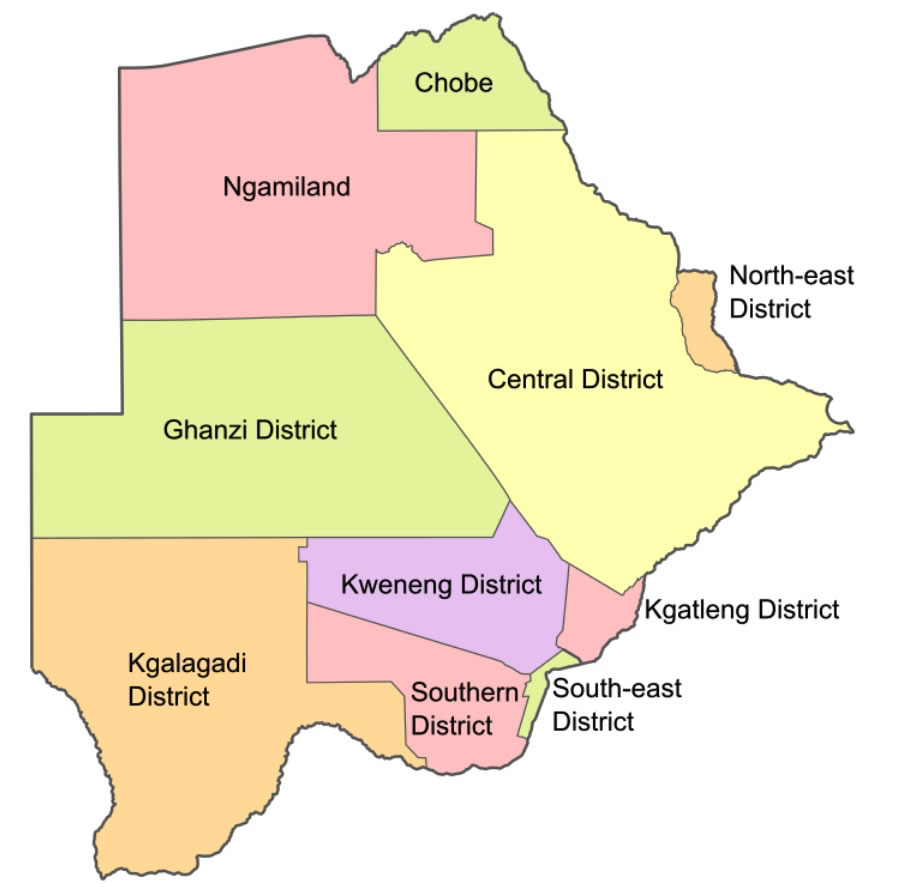
We just saw the northern district of Chobe
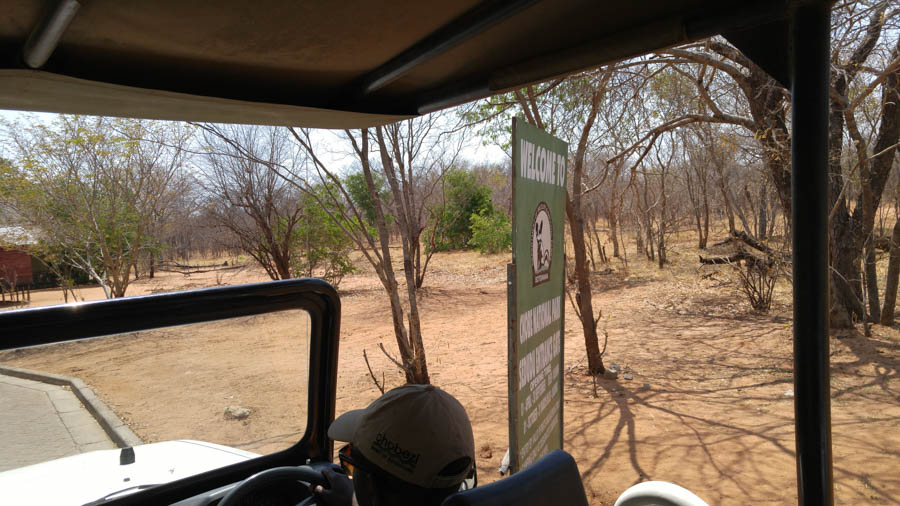
We enter the park and see the displays at the checkin point
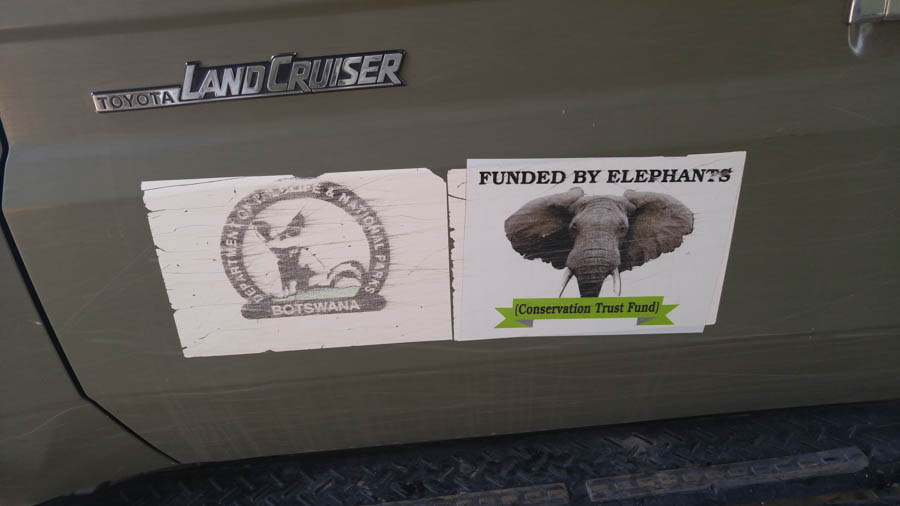
Our transportation from the Safari Lodge was in luxury...
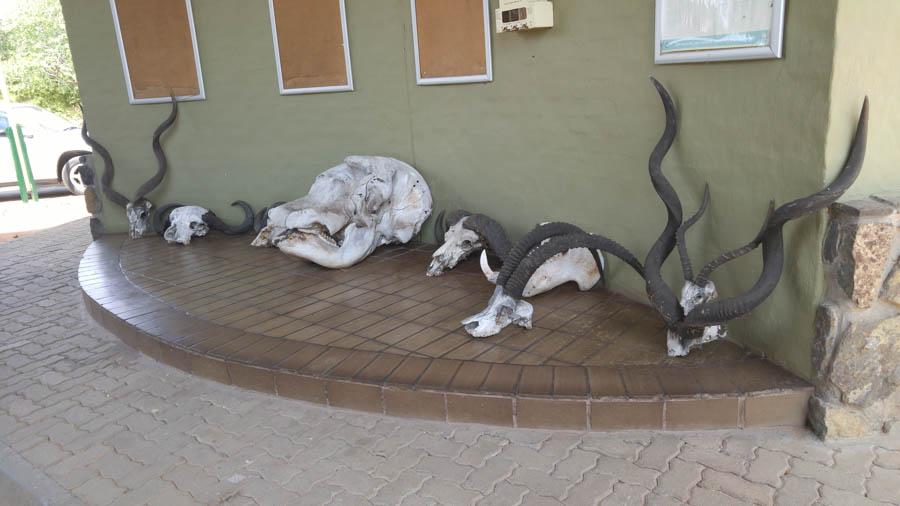
Reminder... Follow the rules!
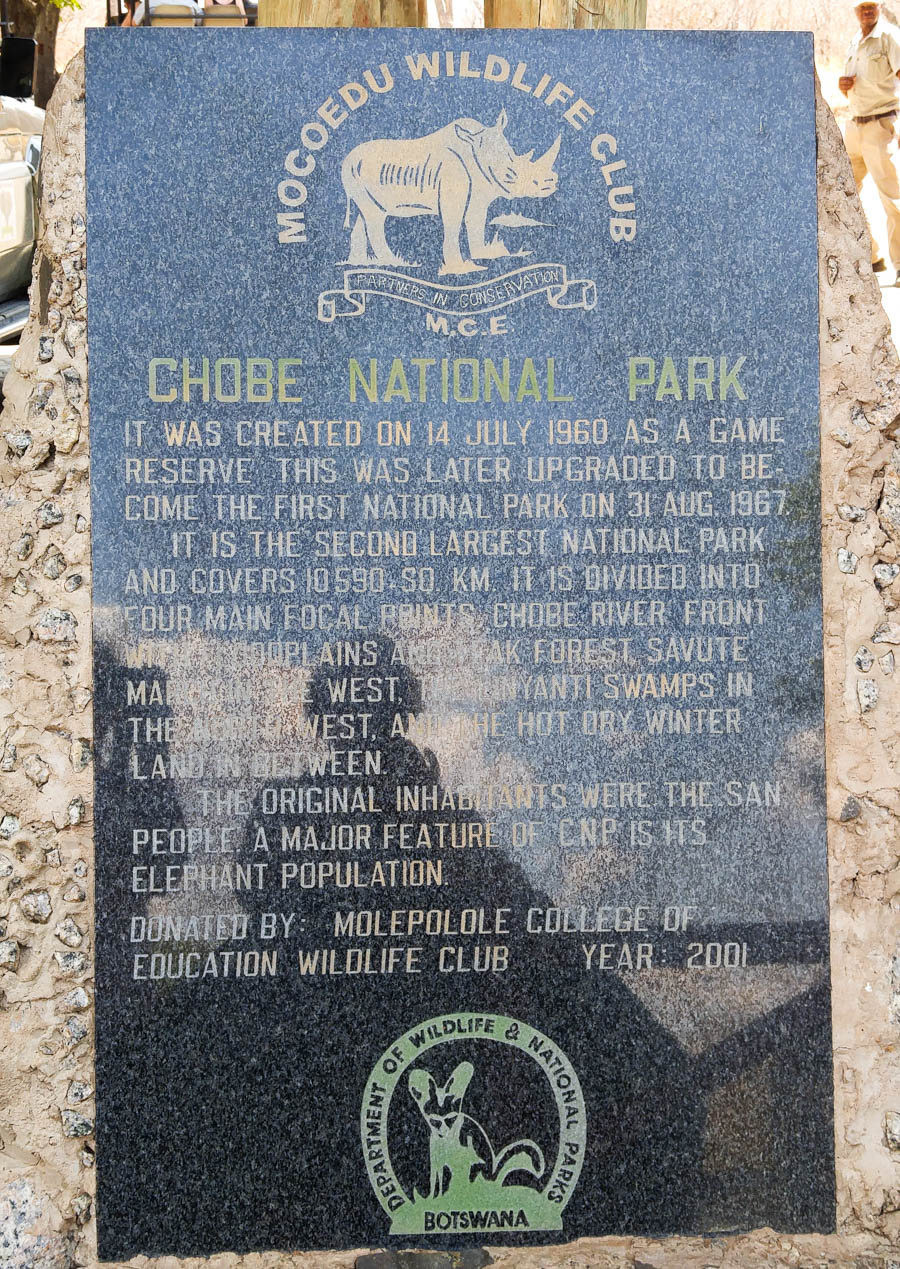
Checking out the signage
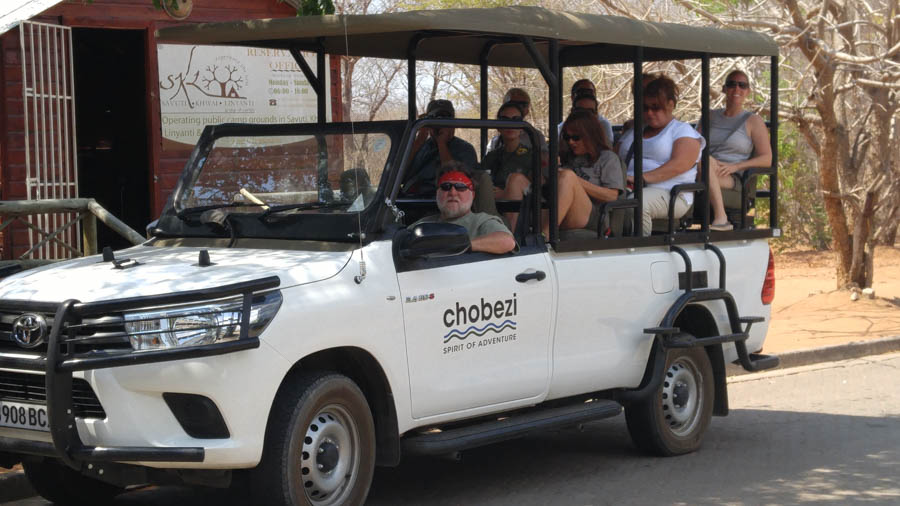
Loaded up and ready to go!
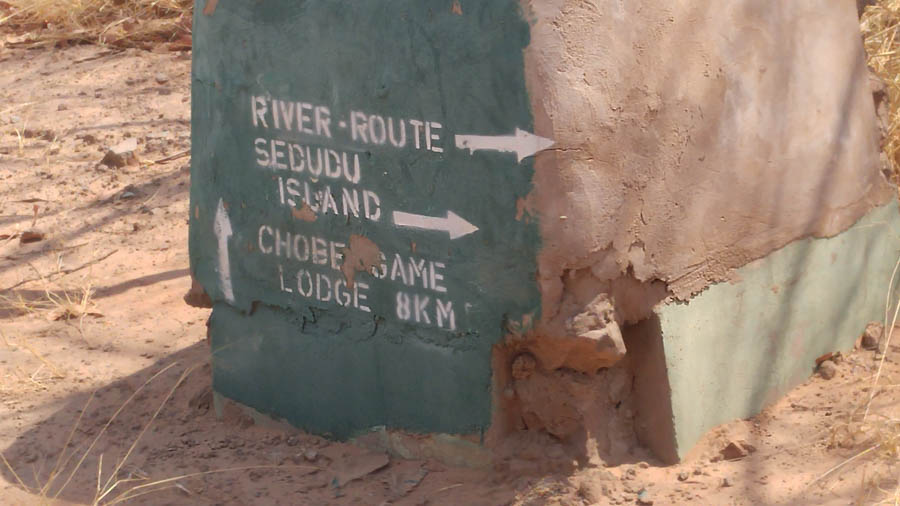
Down along the river we go!
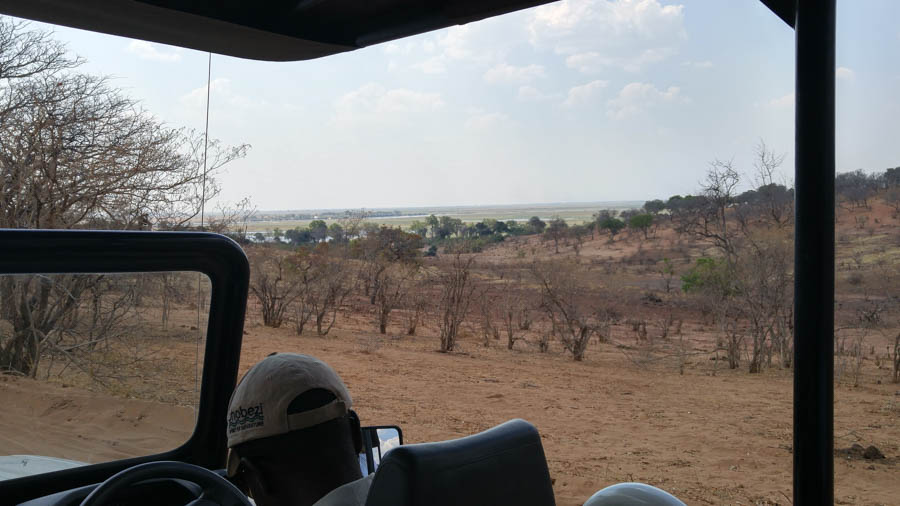
Our guide is outfitted with books showing the various animals
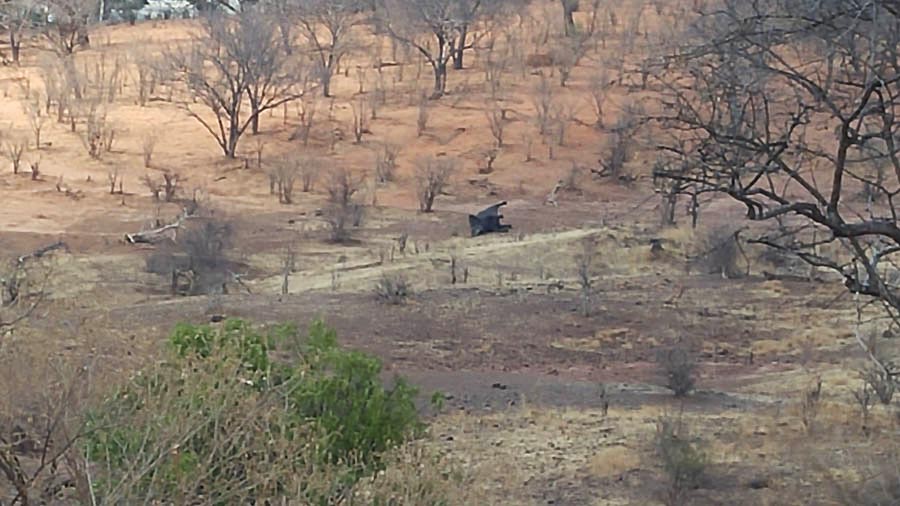
The little elephant did not make it... The buzzards will be here soon
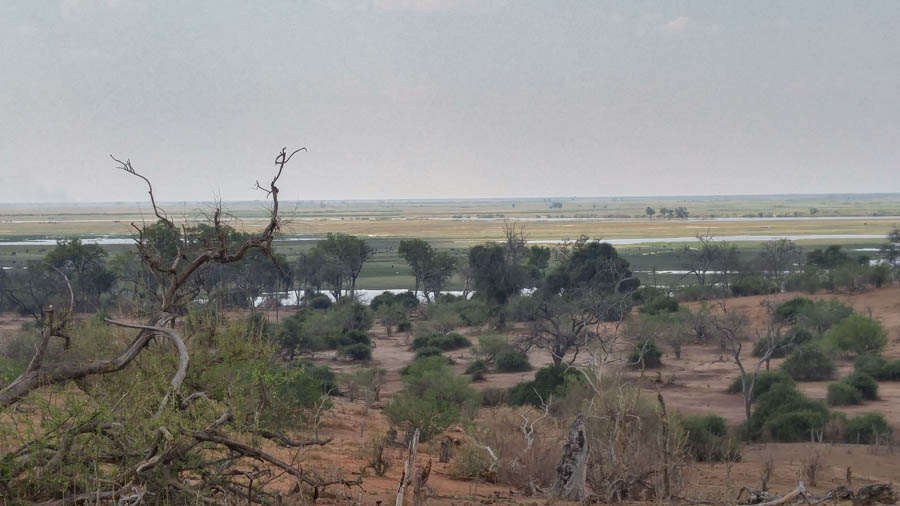
Flat as far as the eye can see!
Did You Know? - At 581,730 km2 (224,607 sq mi) Botswana is the world's 48th-largest country. It is similar in size to Madagascar or France. It lies between latitudes 17° and 27°S, and longitudes 20° and 30°E.
The country is predominantly flat, tending toward gently rolling tableland. Botswana is dominated by the Kalahari Desert, which covers up to 70% of its land surface. The Okavango Delta, one of the world's largest inland deltas, is in the northwest.
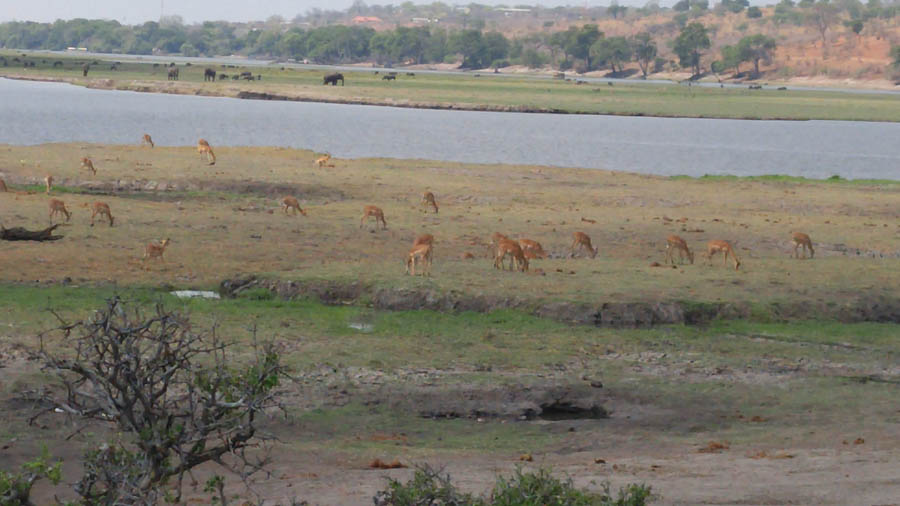
Guaranteed to see animals~
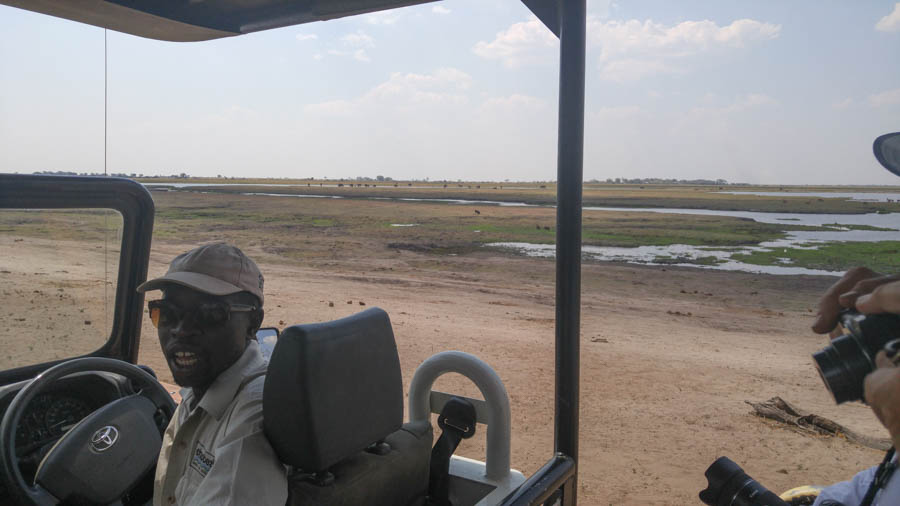
The guide was quite knowledgeable
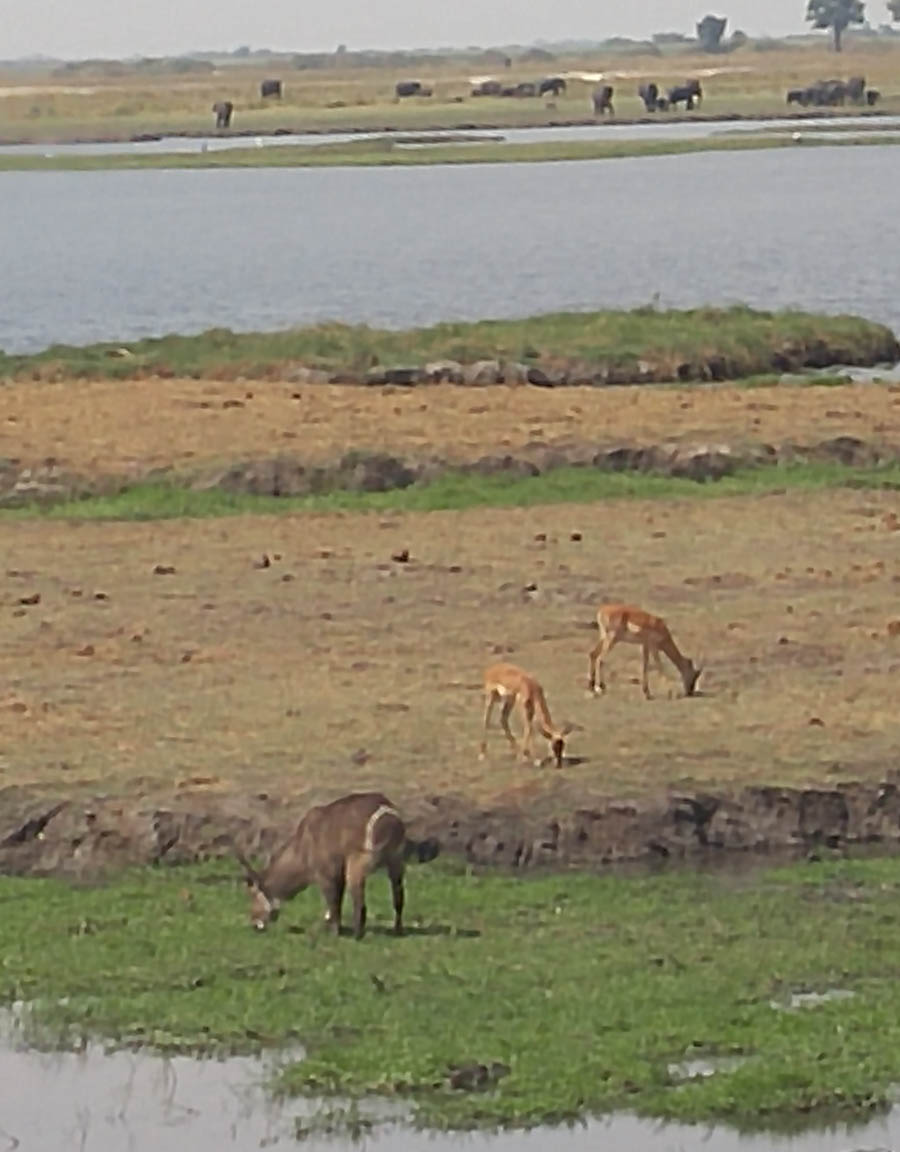
...where the Antelope play!
Did You Know? - Botswana has diverse areas of wildlife habitat. In addition to the delta and desert areas, there are grasslands and savannas, where blue wildebeest, antelopes, and other mammals and birds are found. Northern Botswana has one of the few remaining large populations of the endangered African wild dog. Chobe National Park, found in the Chobe District, has the world's largest concentration of African elephants. The park covers about 11,000 km2 (4,247 sq mi) and supports about 350 species of birds.
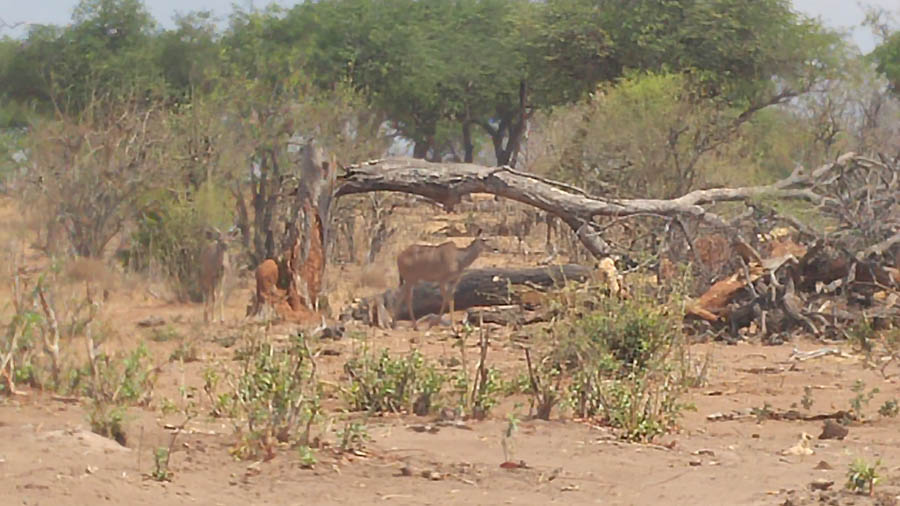
Look under the tree... Their colors match the surroundings!
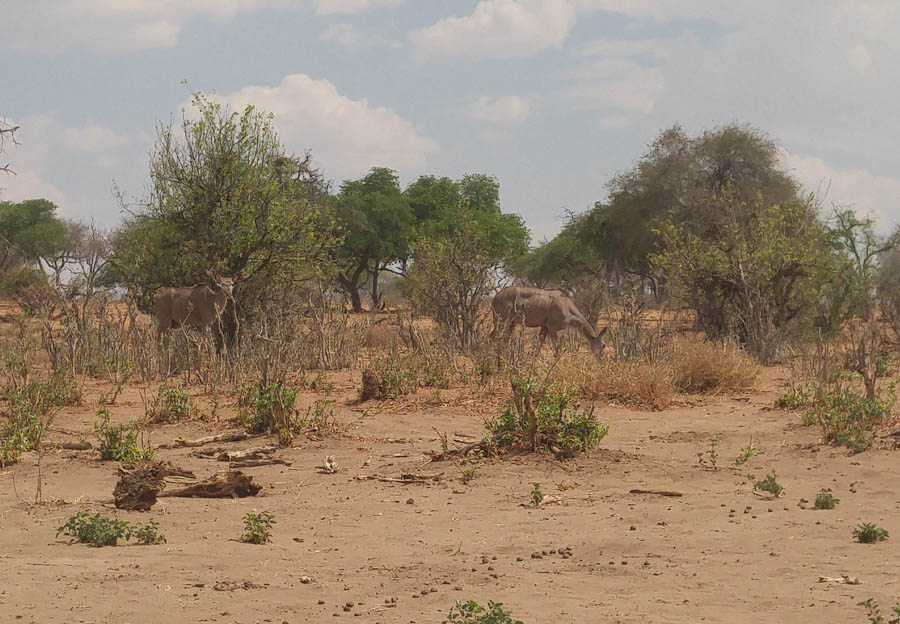
Always grazing but do you see a head up in the tree?
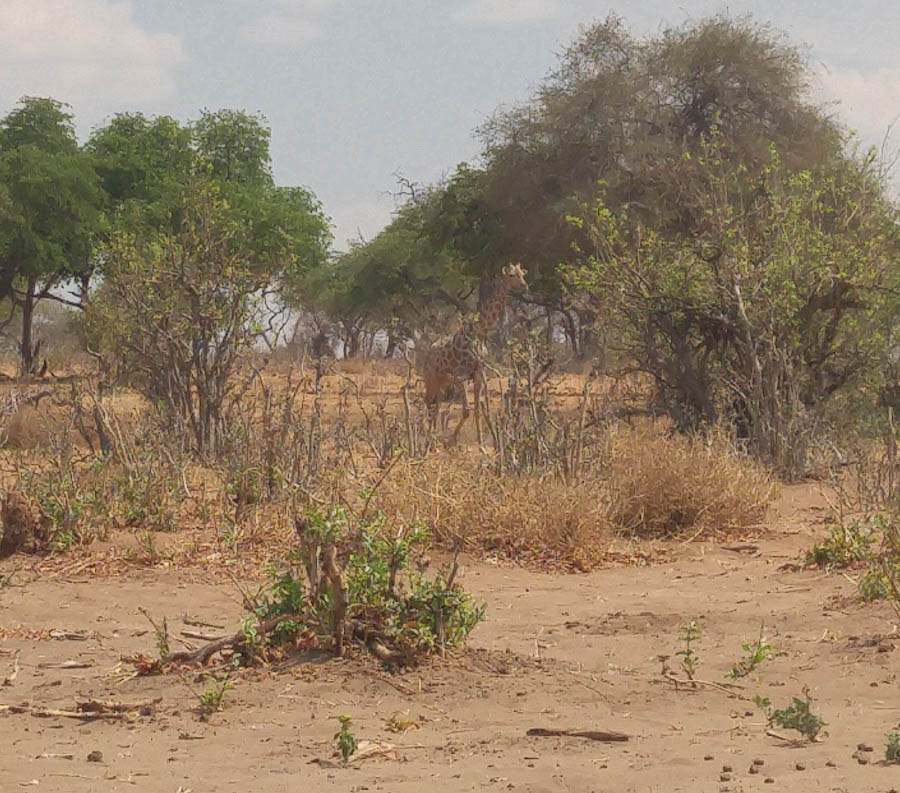
The giraffe makes lunch in the tree tops
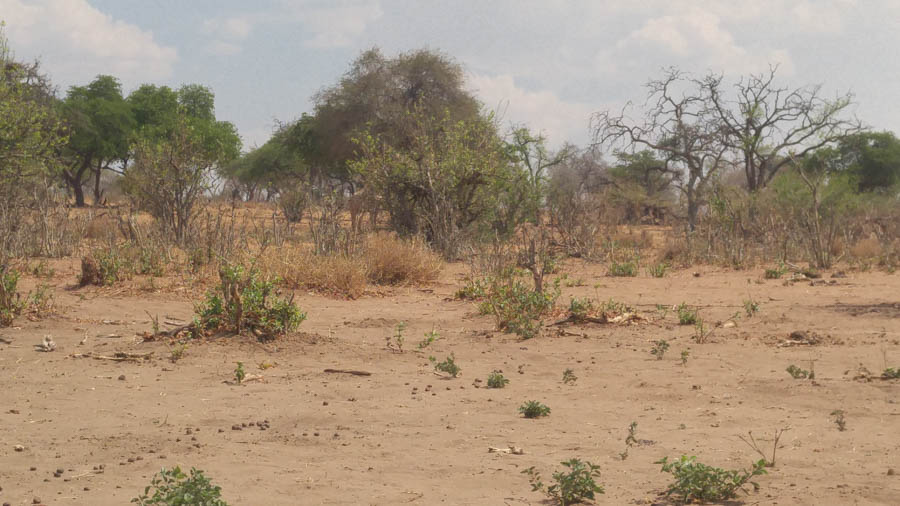
There are two giraffes by the large tree
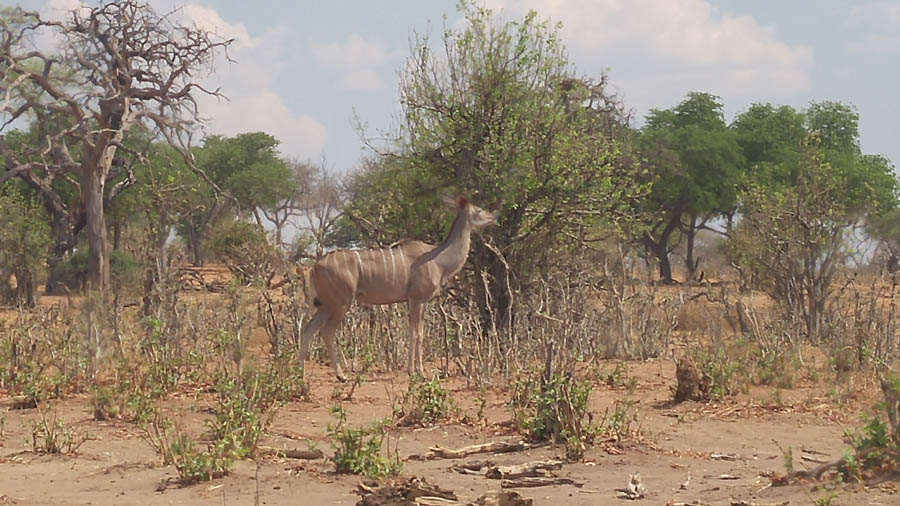
Mother Nature did them well!
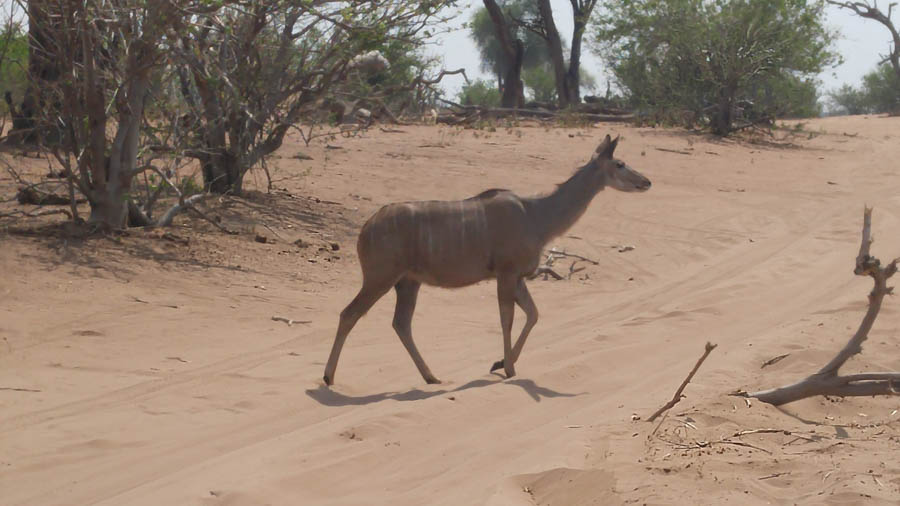
Crossing the "road"
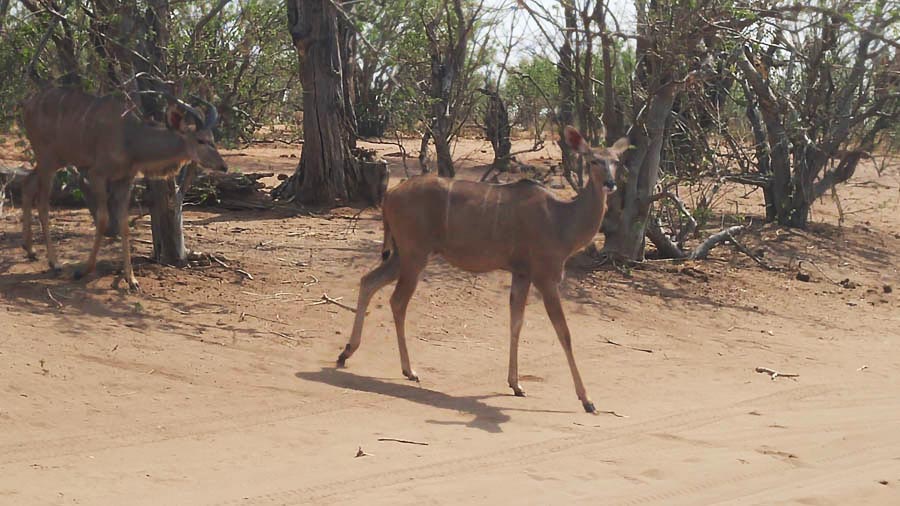
Good boy... He looked both ways!
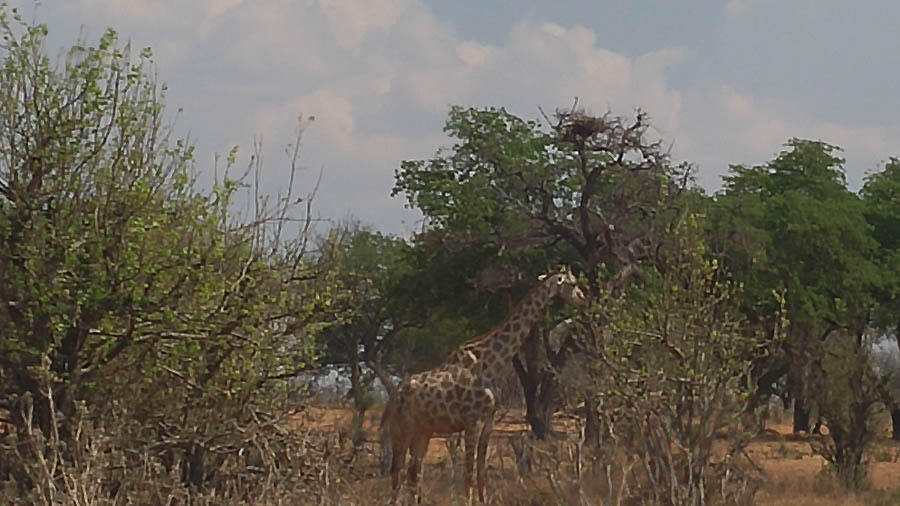
Stretch!
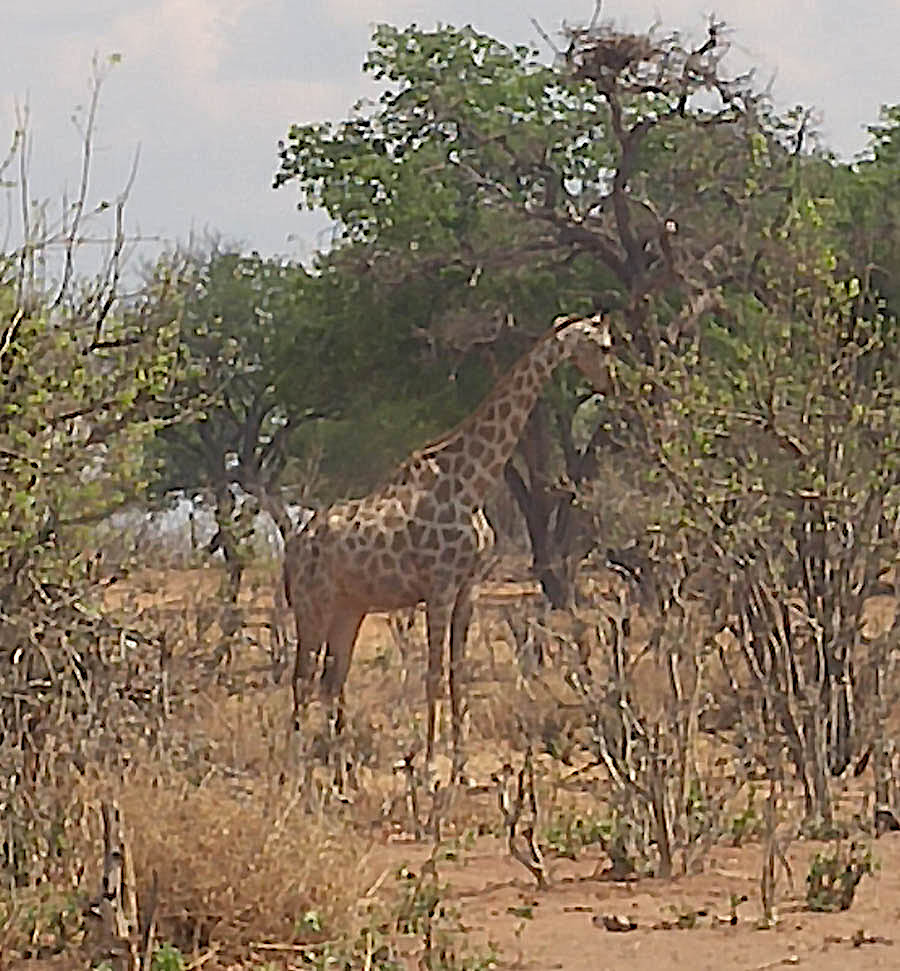
Now we know why their markings are the way they are
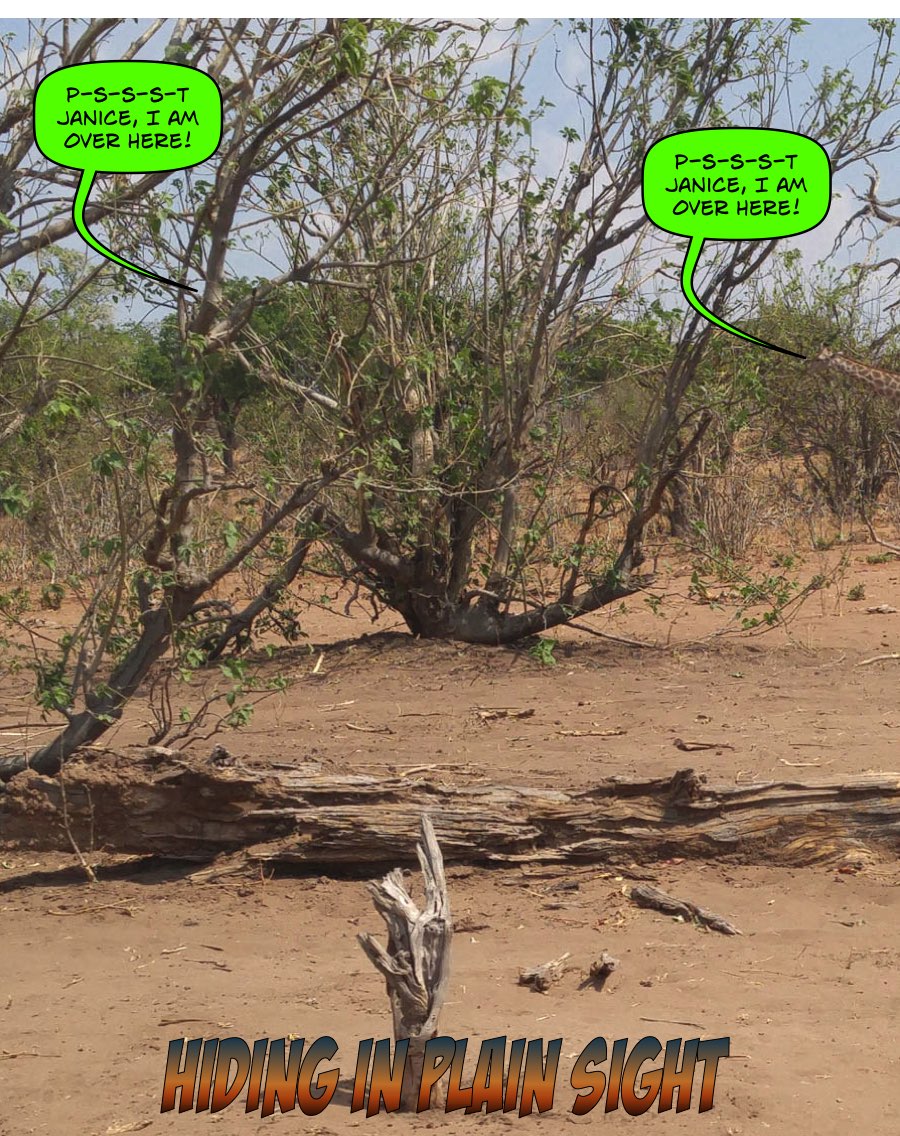
Did You Know? - Since independence, Botswana has had one of the fastest growth rates in per capita income in the world. Botswana has transformed itself from one of the poorest countries in the world to a middle-income country. Although Botswana was resource-abundant, a good institutional framework allowed the country to reinvest resource-income in order to generate stable future income.
By one estimate, it has the fourth highest gross national income at purchasing power parity in Africa, giving it a standard of living around that of Mexico.
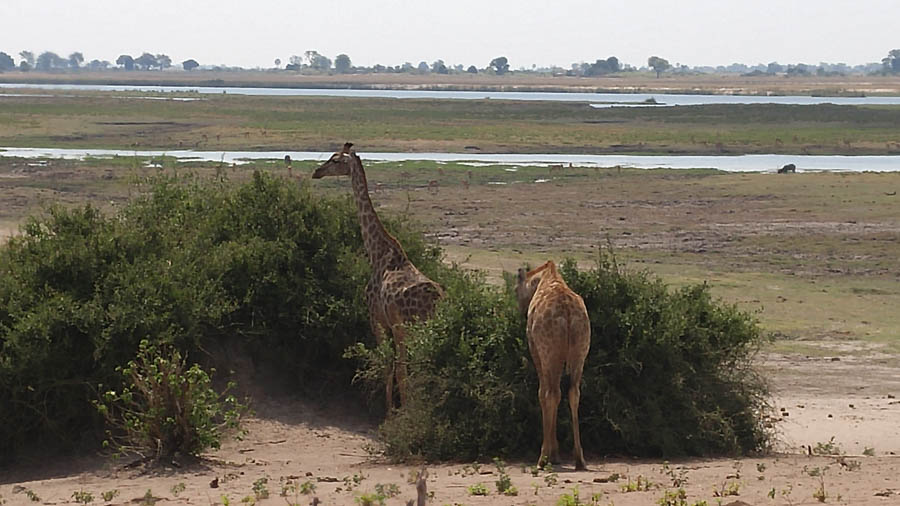
They are hiding... Just browsing the food line
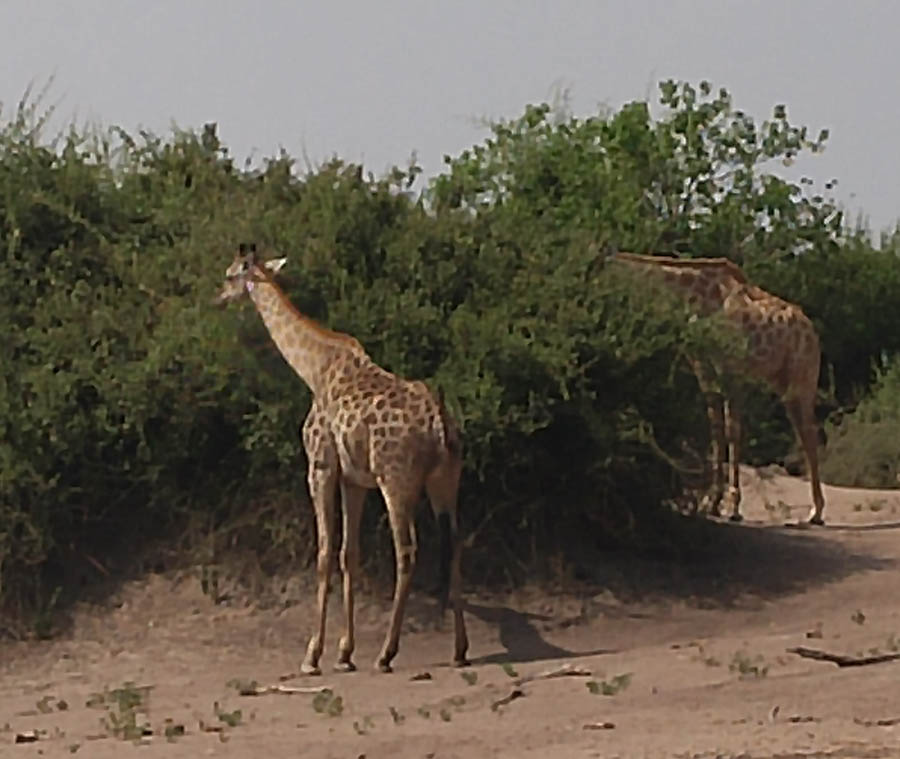
We drove up pretty close
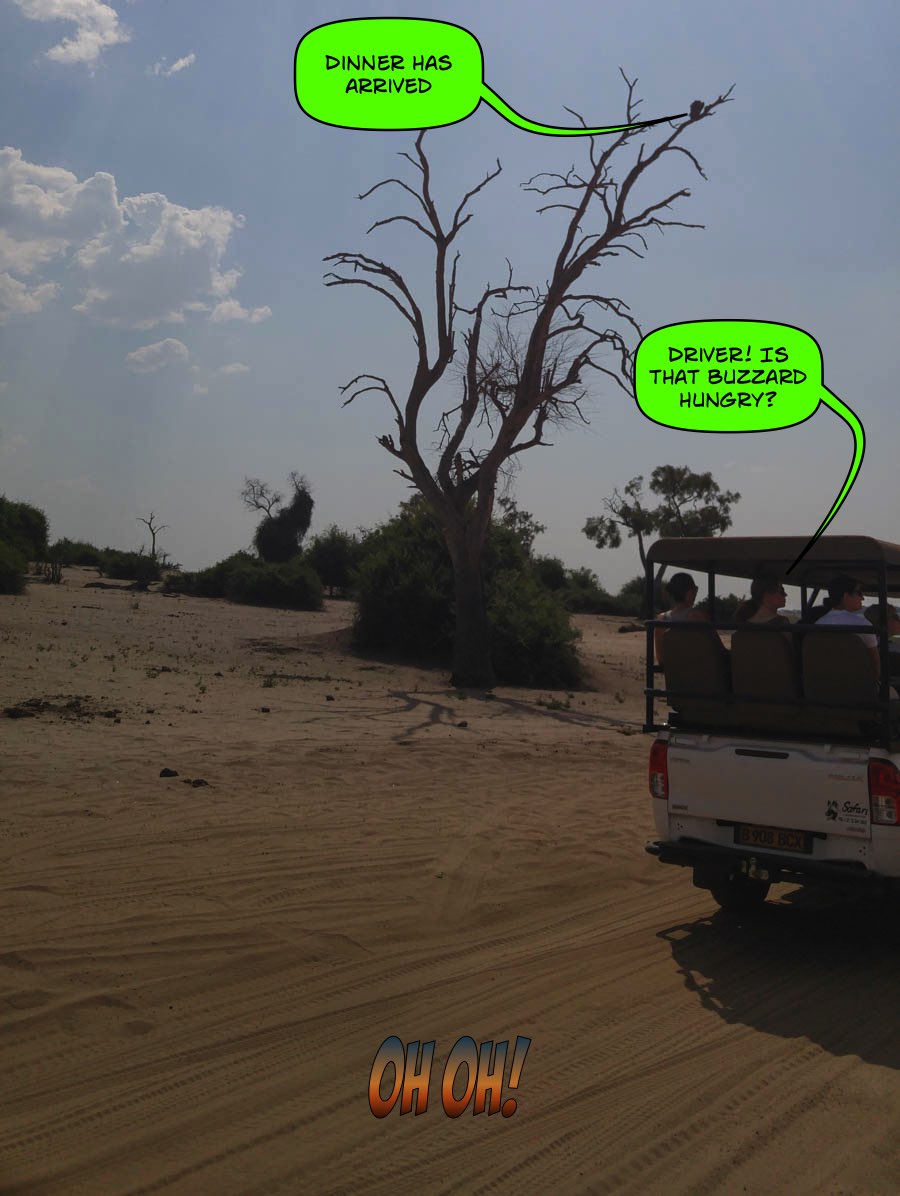
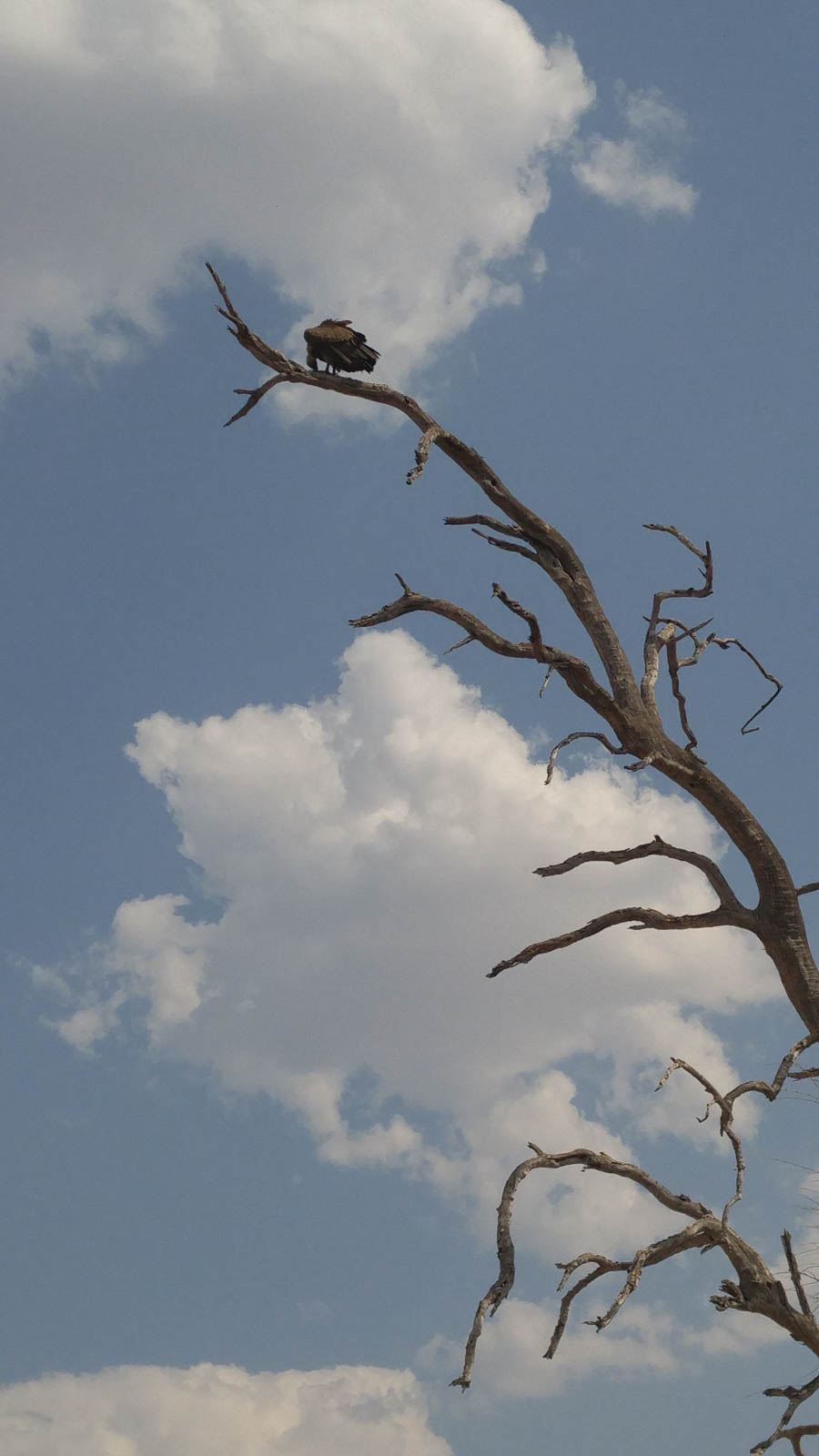
I calls that "Meals On Wheels"
Did You Know? - The official language of Botswana is English although Setswana is widely spoken across the country. In Setswana, prefixes are more important than they are in many other languages, since Setswana is a Bantu language and has noun classes denoted by these prefixes.
They include Bo, which refers to the country, Ba, which refers to the people, Mo, which is one person, and Se which is the language. For example, the main ethnic group of Botswana is the Tswana people, hence the name Botswana for its country. The people as a whole are Batswana, one person is a Motswana, and the language they speak is Setswana.
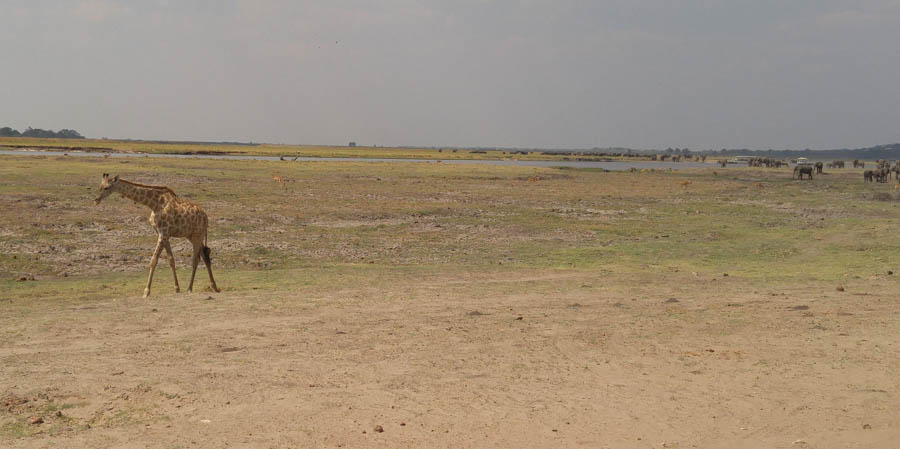
They look small at a distance
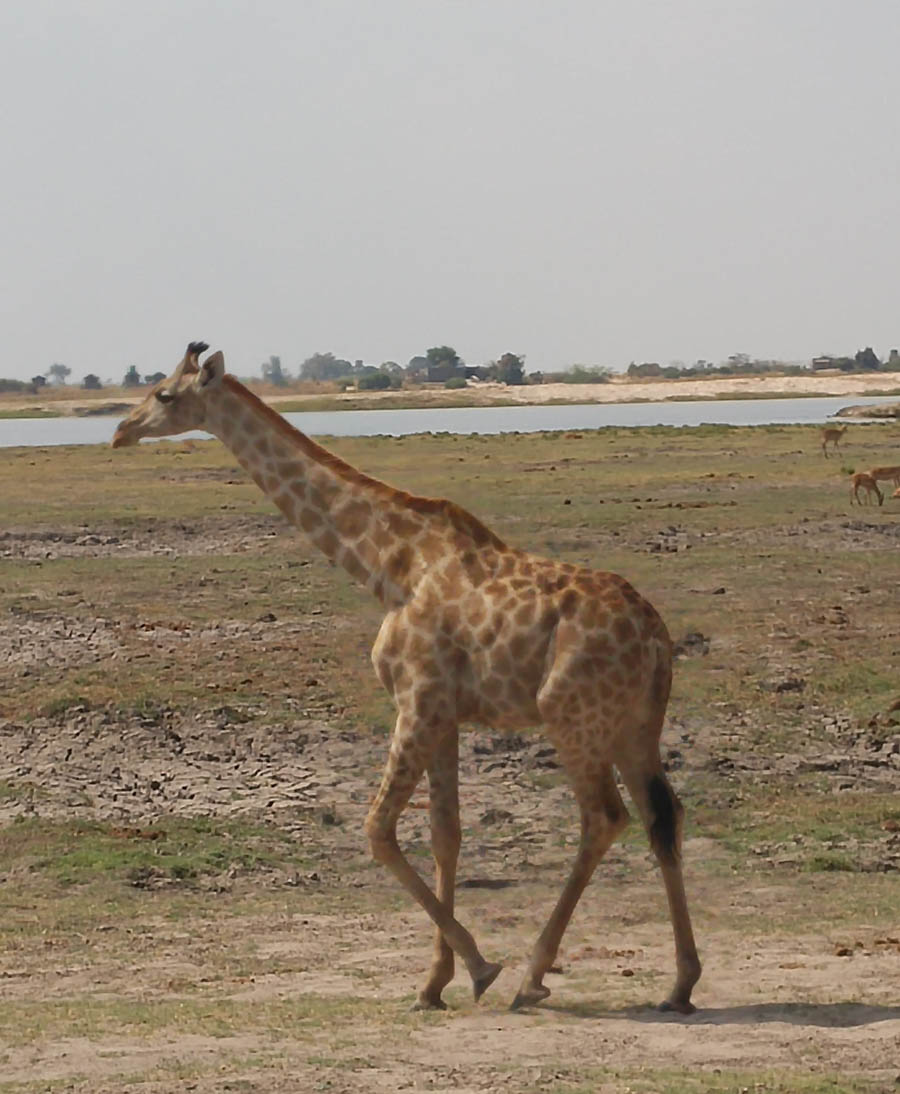
Then we get up close they take a stroll
Did You Know? - Male giraffes will test a female's fertility by tasting her urine. Which is something now you can't un-know.

Did You Know? - Giraffes require over 75 pounds of food a day—and with a diet of leaves, this means they spend most of their time eating.

Our driver approaches the animals carefully

Sometimes they cooperate

Running into the mud is a good way of leaving us in the distance

Just scampering right along
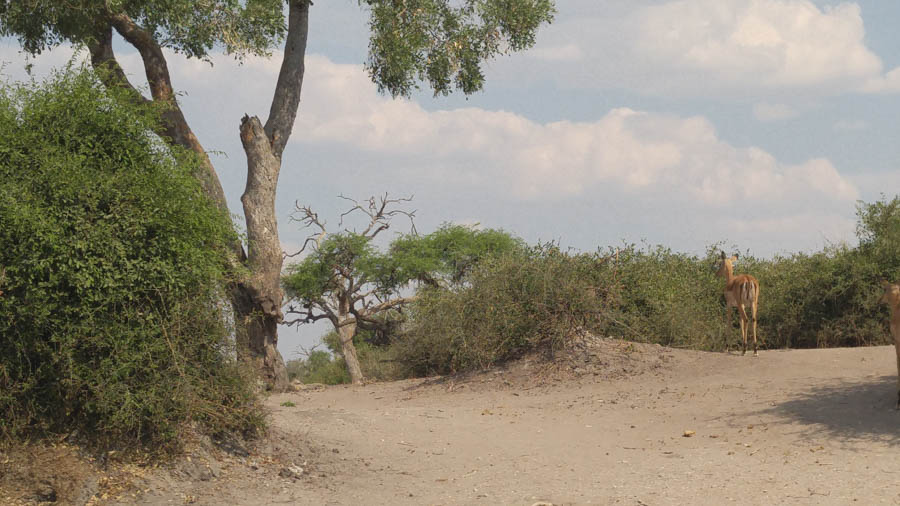
Looking for something to eat
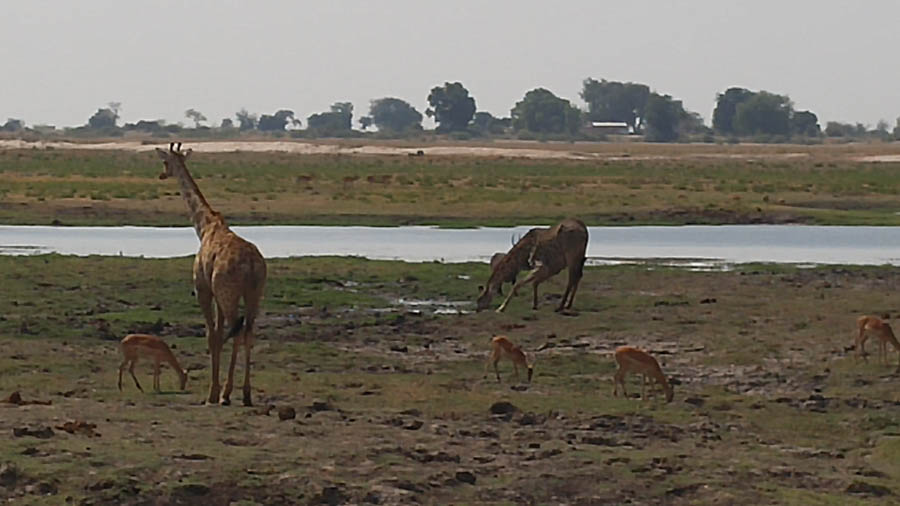
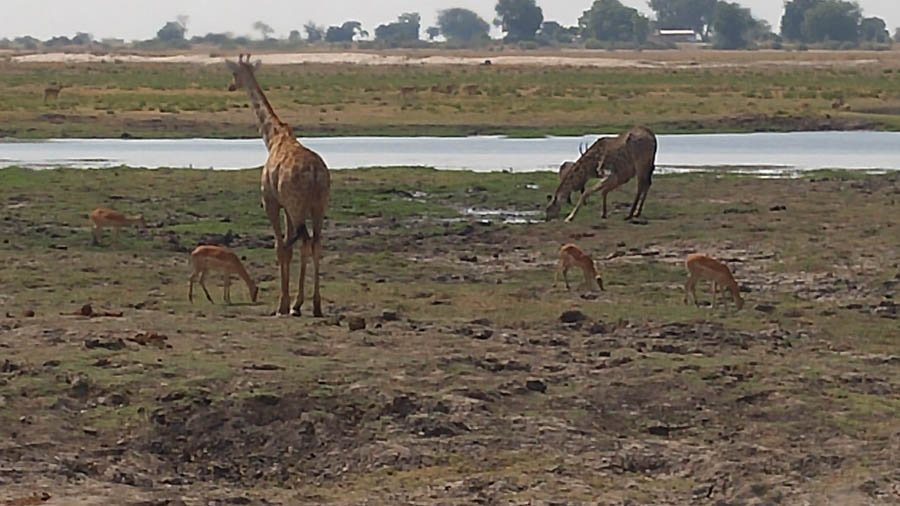
No meals here
Did You Know? - The giraffe's scientific name, Giraffa camelopardalis, comes from the ancient Greeks' belief that it looked like a camel wearing a leopard's coat.
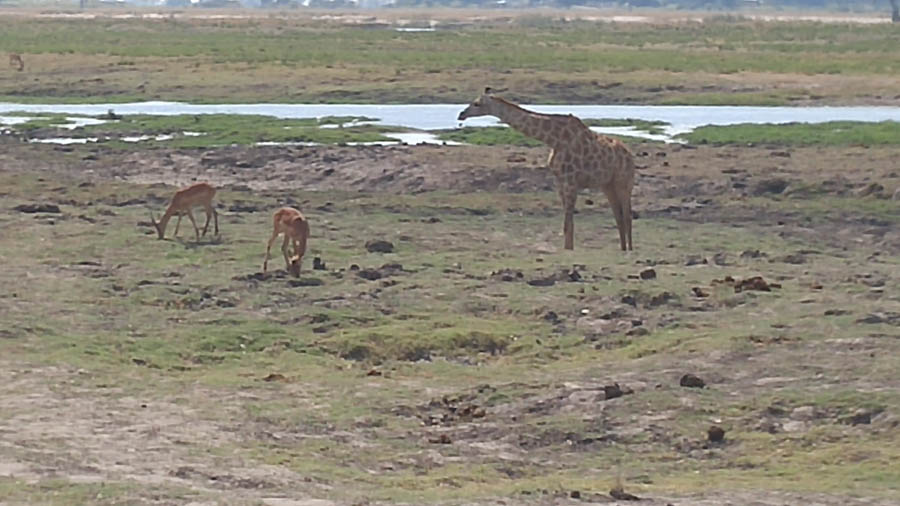
"OK guys... Back to the trees!"
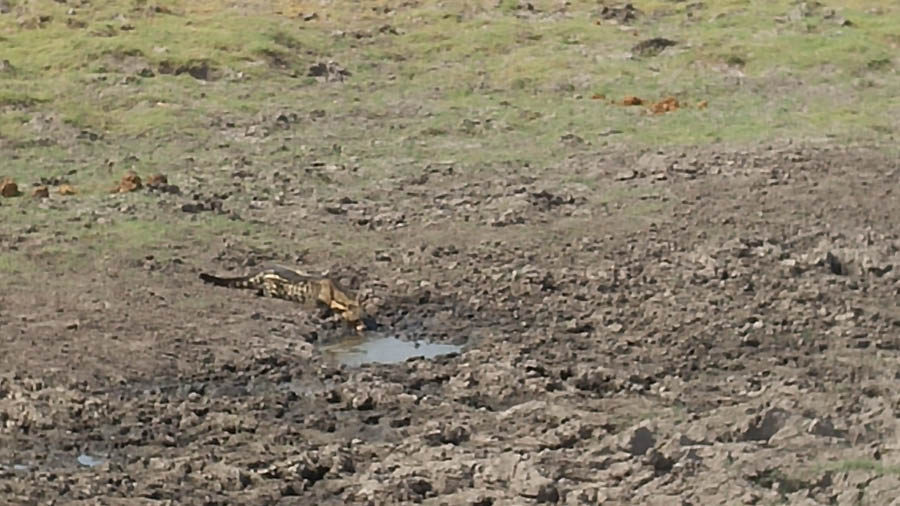
What is it?
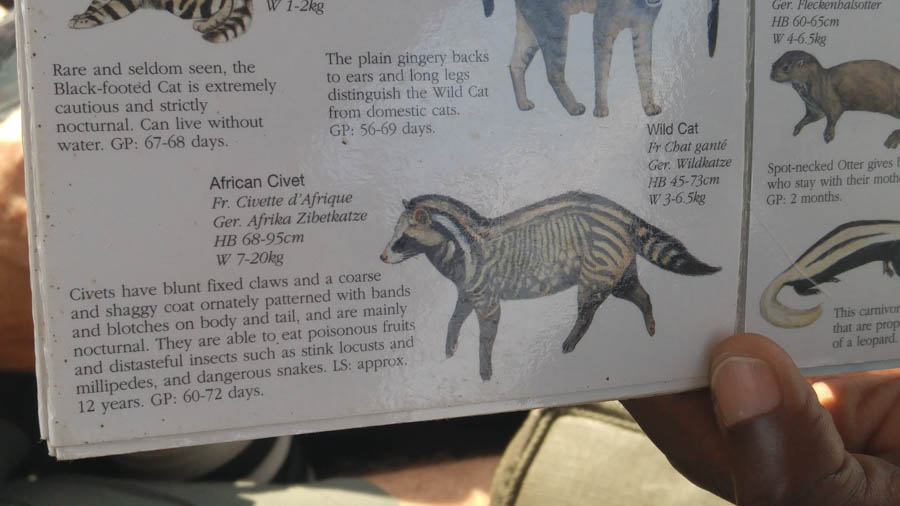
Our guide quickly shows us the African Civet
Did You Know? - It is primarily nocturnal and spends the day sleeping in dense vegetation. It is a solitary mammal that has a unique coloration: the black and white stripes and blotches covering the coarse pelage of the animal are extremely variable and allow it to be cryptic. The black bands surrounding its eyes closely resemble those of the raccoon. Other distinguishing features are its disproportionately large hindquarters and its erectile dorsal crest.
The African civet is an omnivorous generalist, taking small vertebrates, invertebrates, eggs, carrion, and vegetable matter. It is capable of taking on poisonous invertebrates and snakes. Prey is primarily detected by smell and sound rather than by sight. It prefers riverine habitats and woodlands.

Looking for a meal!
Note To You! - African Civet - our guide told us we were very lucky to see one since they are nocturnal like you said. Our guide speculated that because it was so dry this season, the Civet was extra thirsty and needed to come to get a drink and couldn't wait until evening -
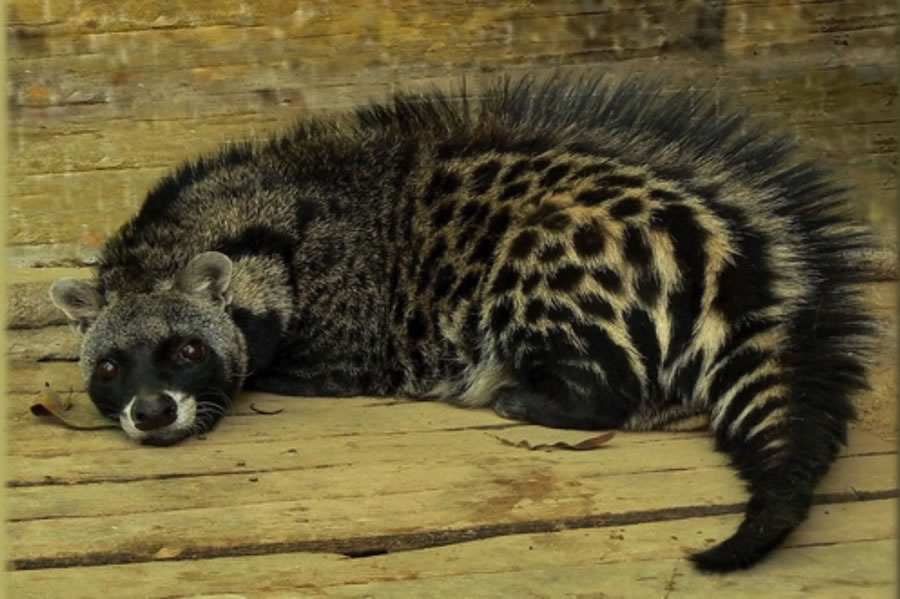
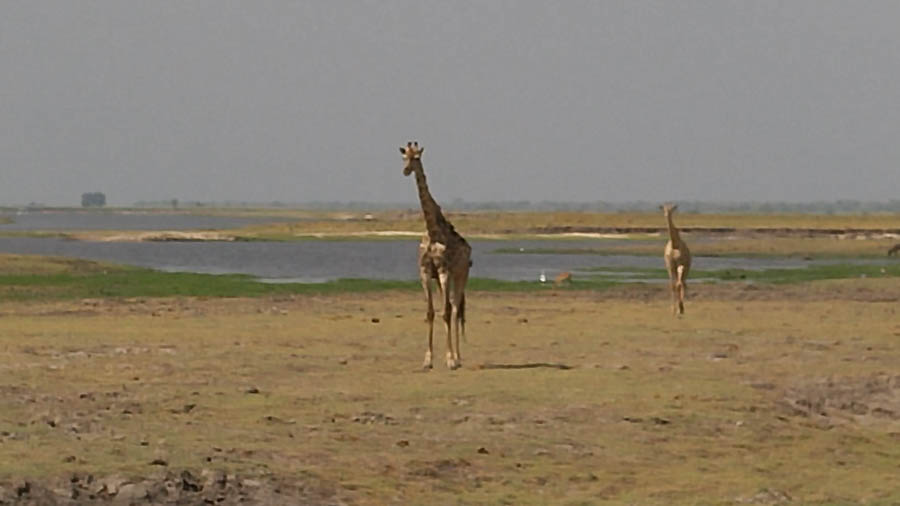
Playing tag?

The birds always have a great view..
Especially of potential meals
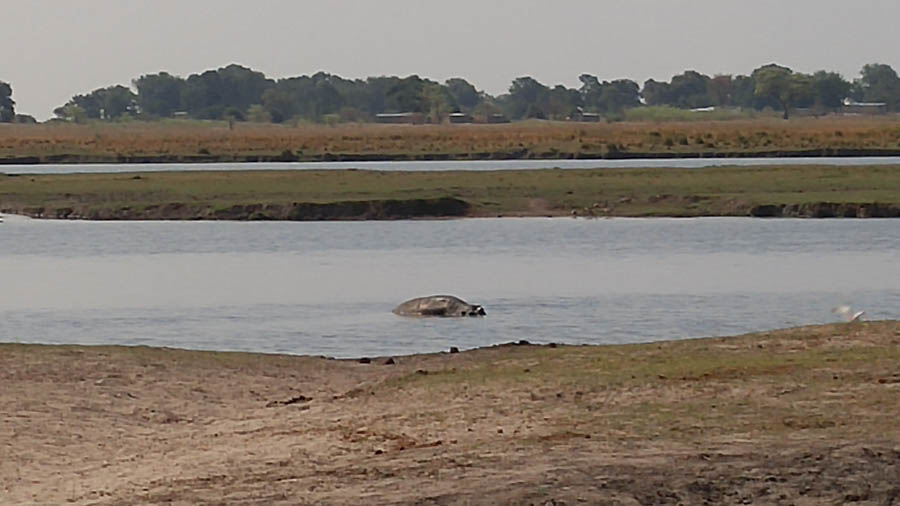
Must be aware of hippos as they are dangerous!
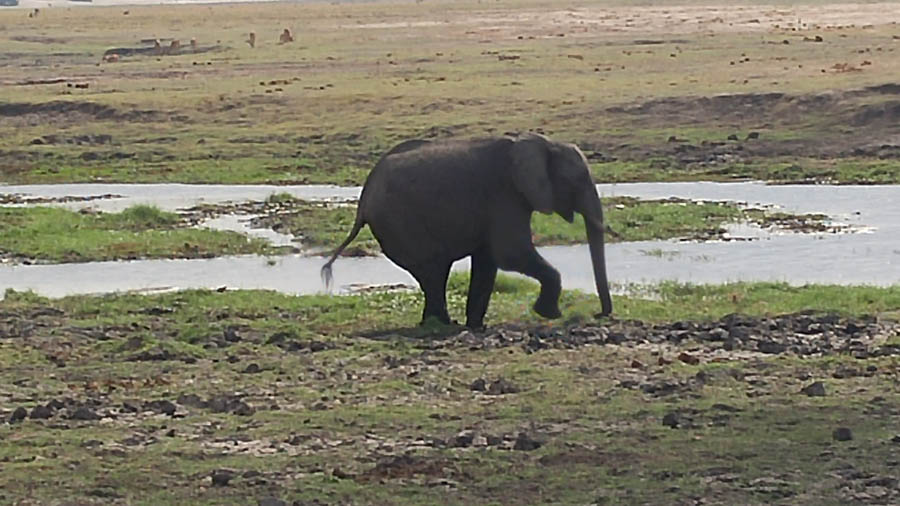
Stomping the mud to get to the best mud!
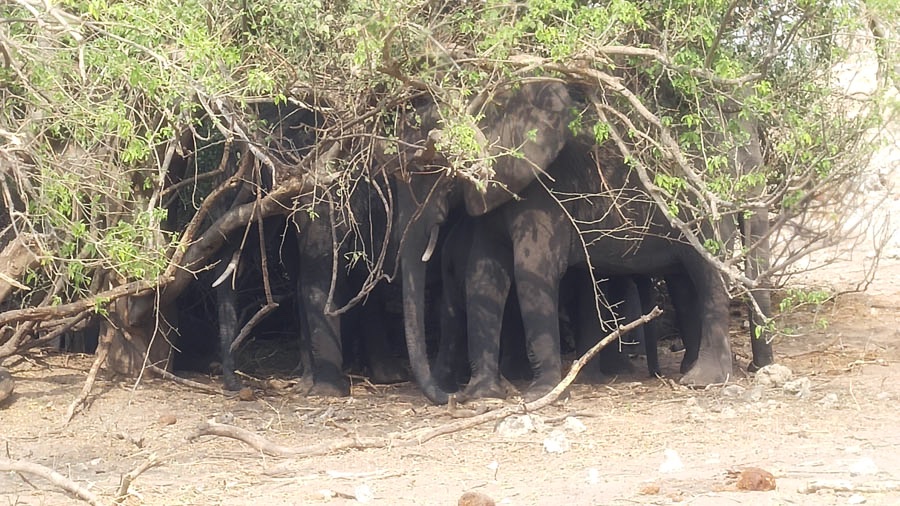
No dummies here... Getting in the shade to cool off
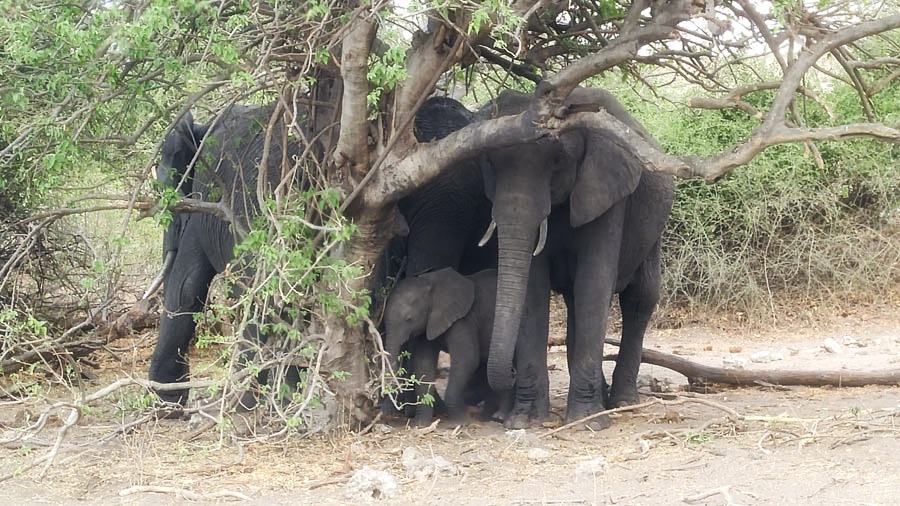
Junior gets in on the plan
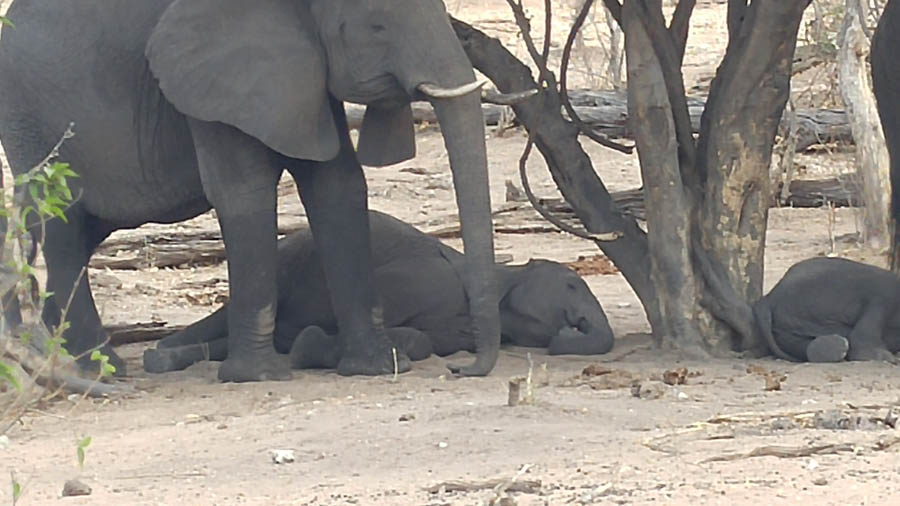
Taking a snooze
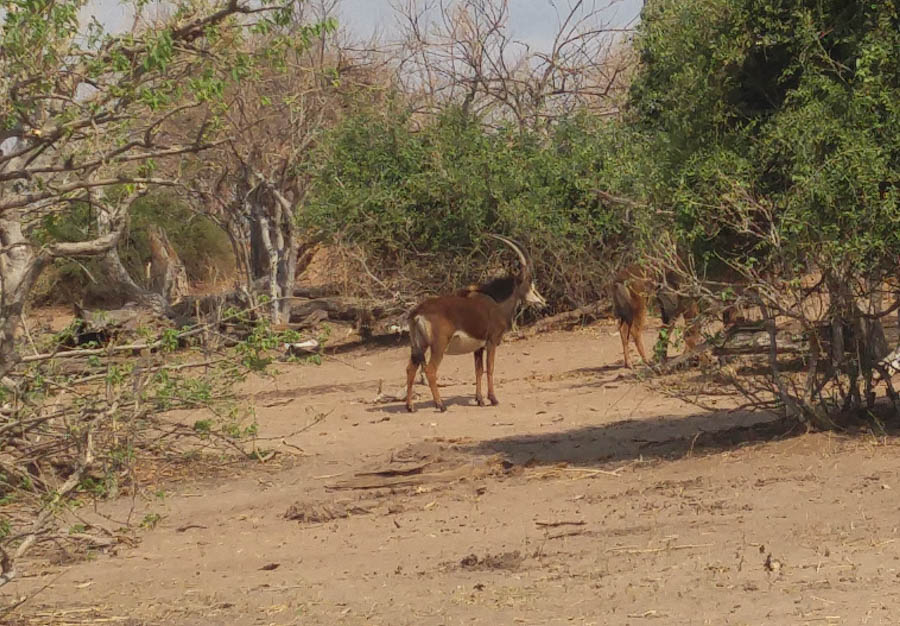
Careful of the horns
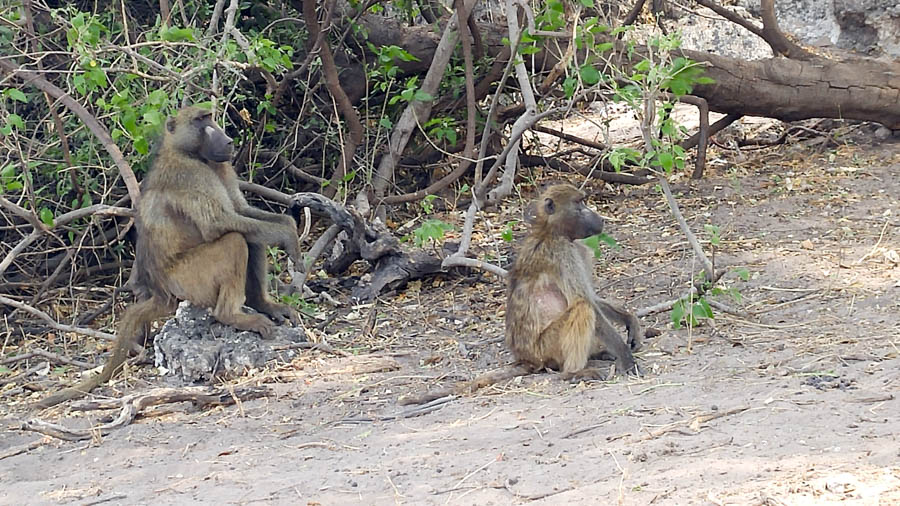
What would it be without monkeys!
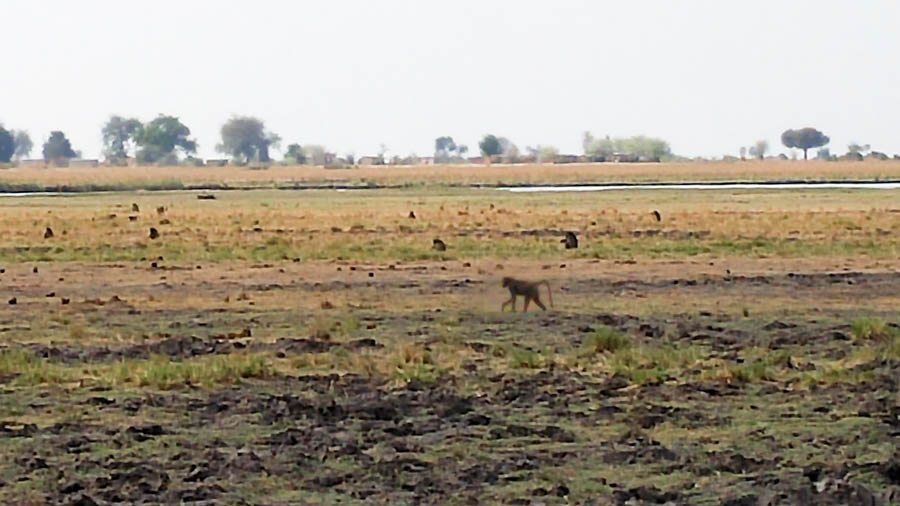
Hundreds of monkeys

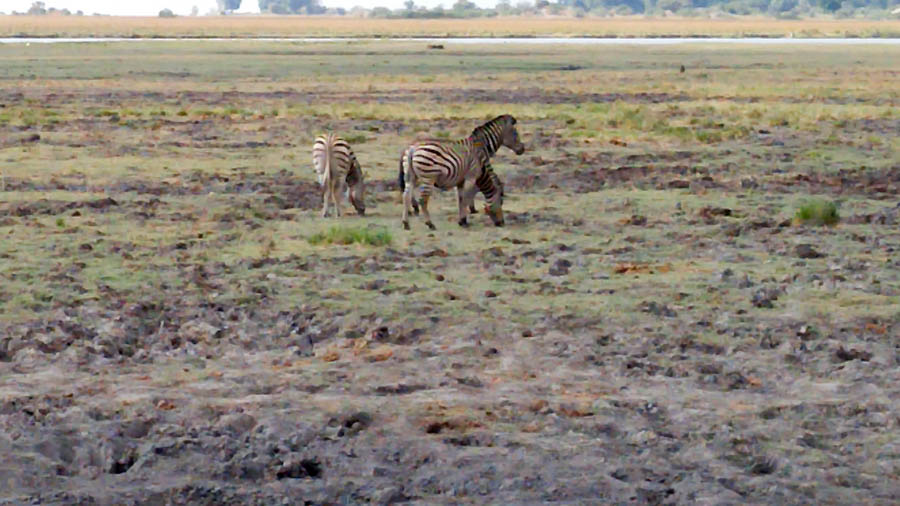
The Zebras were grazing on the grass
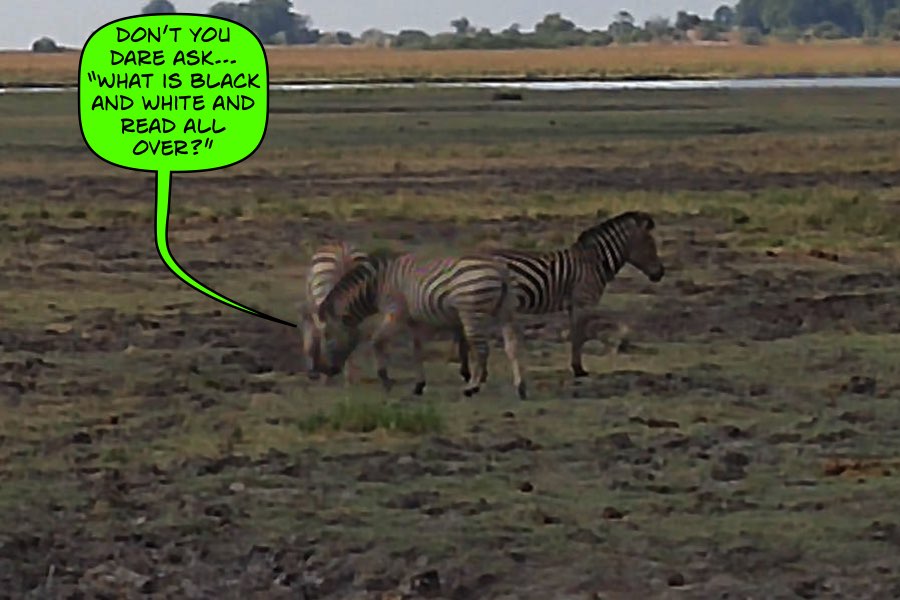
Looking for food
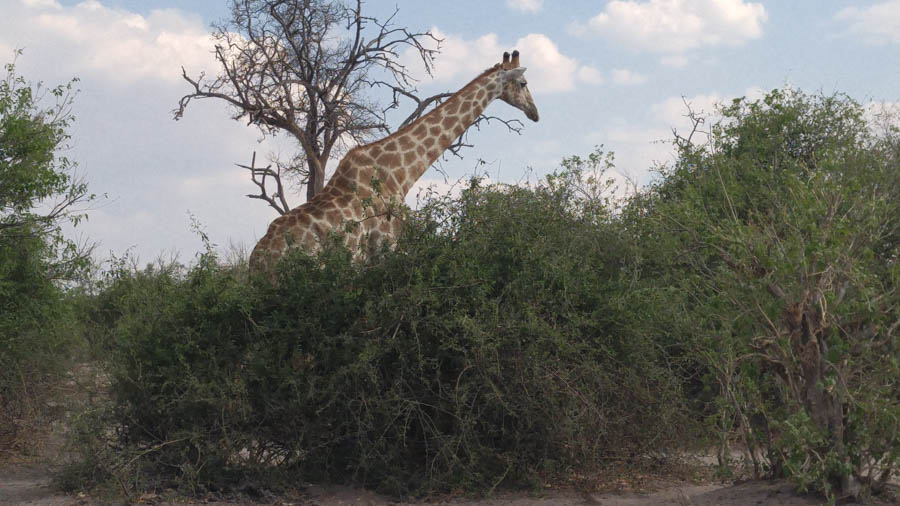
"Did someone say food?"
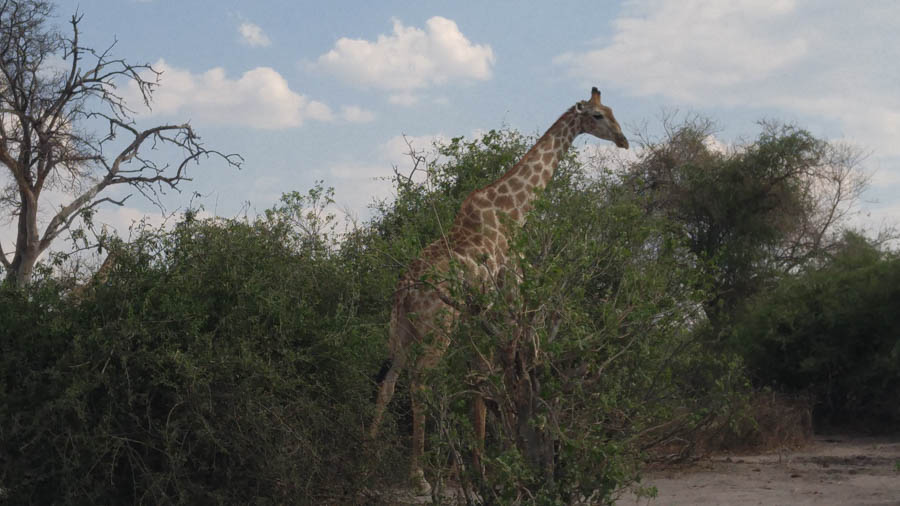
Snacking off the top of the trees
Did You Know? - Because of their unusual shape, giraffes have a highly-specialized cardiovascular system that starts with an enormous heart. It's two feet long and weighs up to 25 pounds.
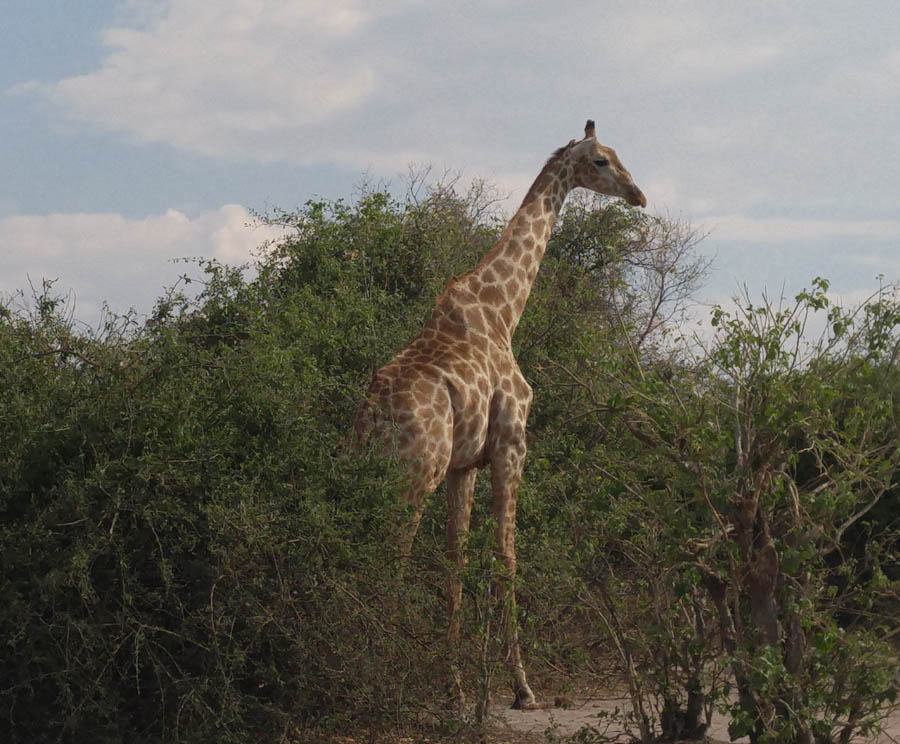
Plenty of foods here!
Did You Know? - A giraffe’s spots are much like human fingerprints. No two individual giraffes have exactly the same pattern.
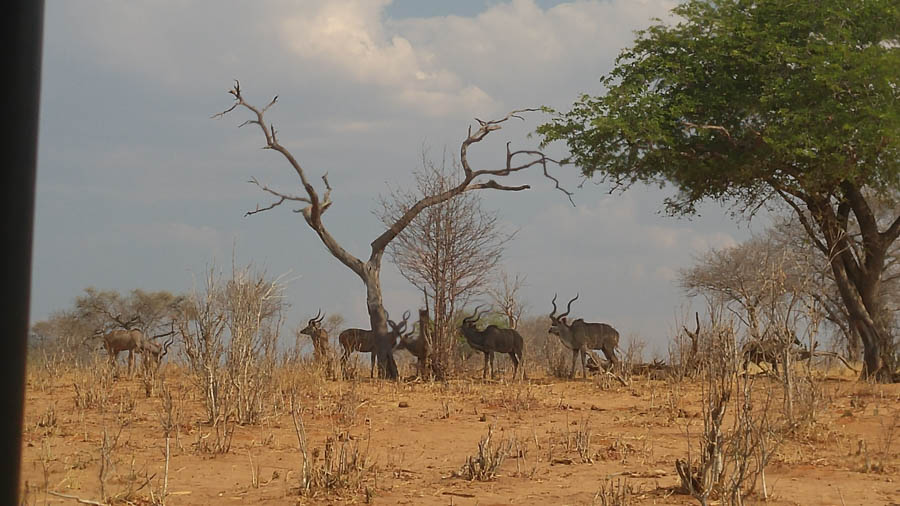
We have been spotted!
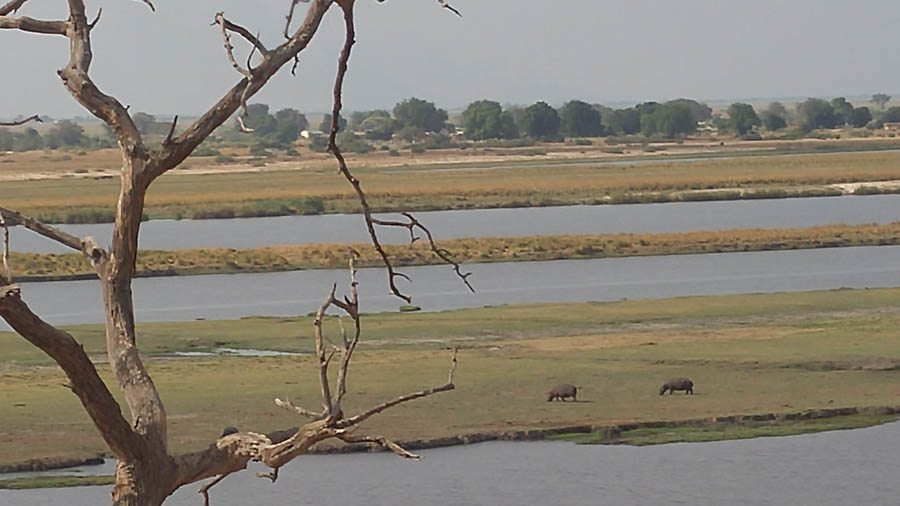
We drove a little higher on the bank overlooking the river
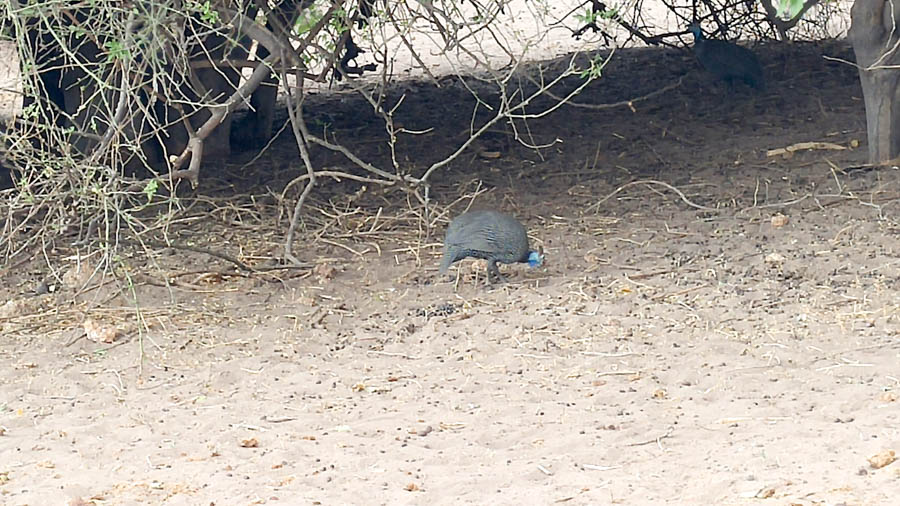
An odd little bird with a blue head?
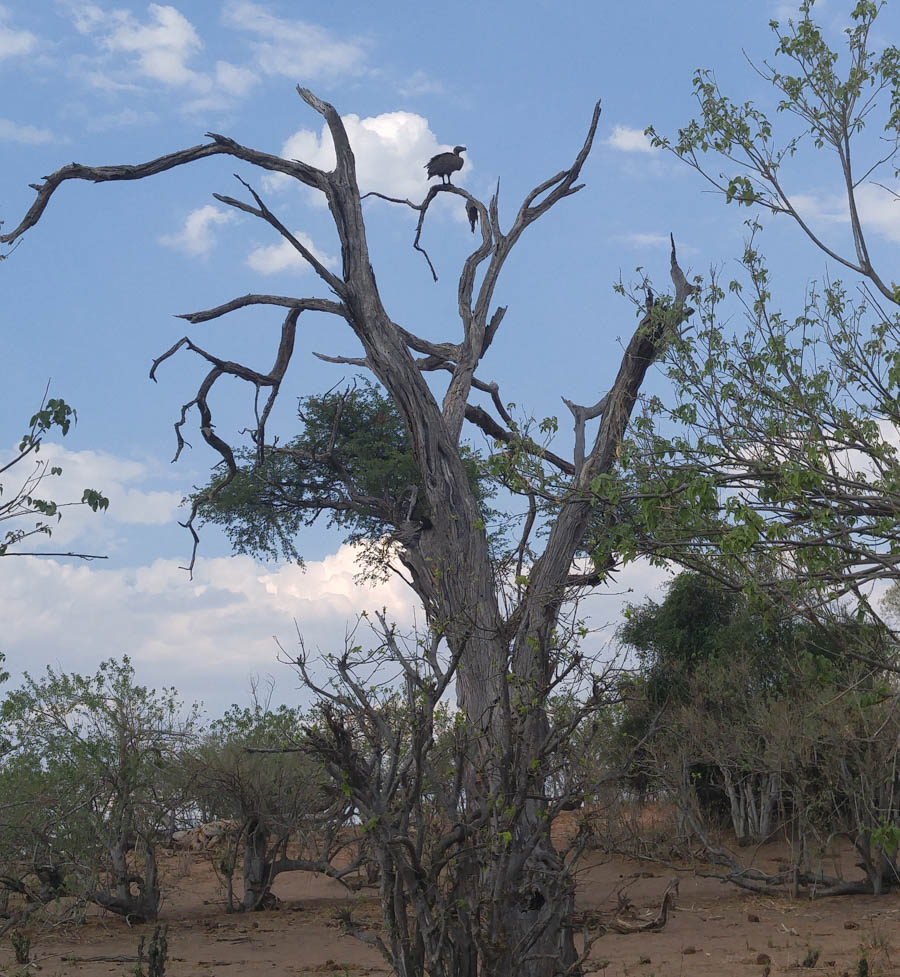
Still looking for lunch!
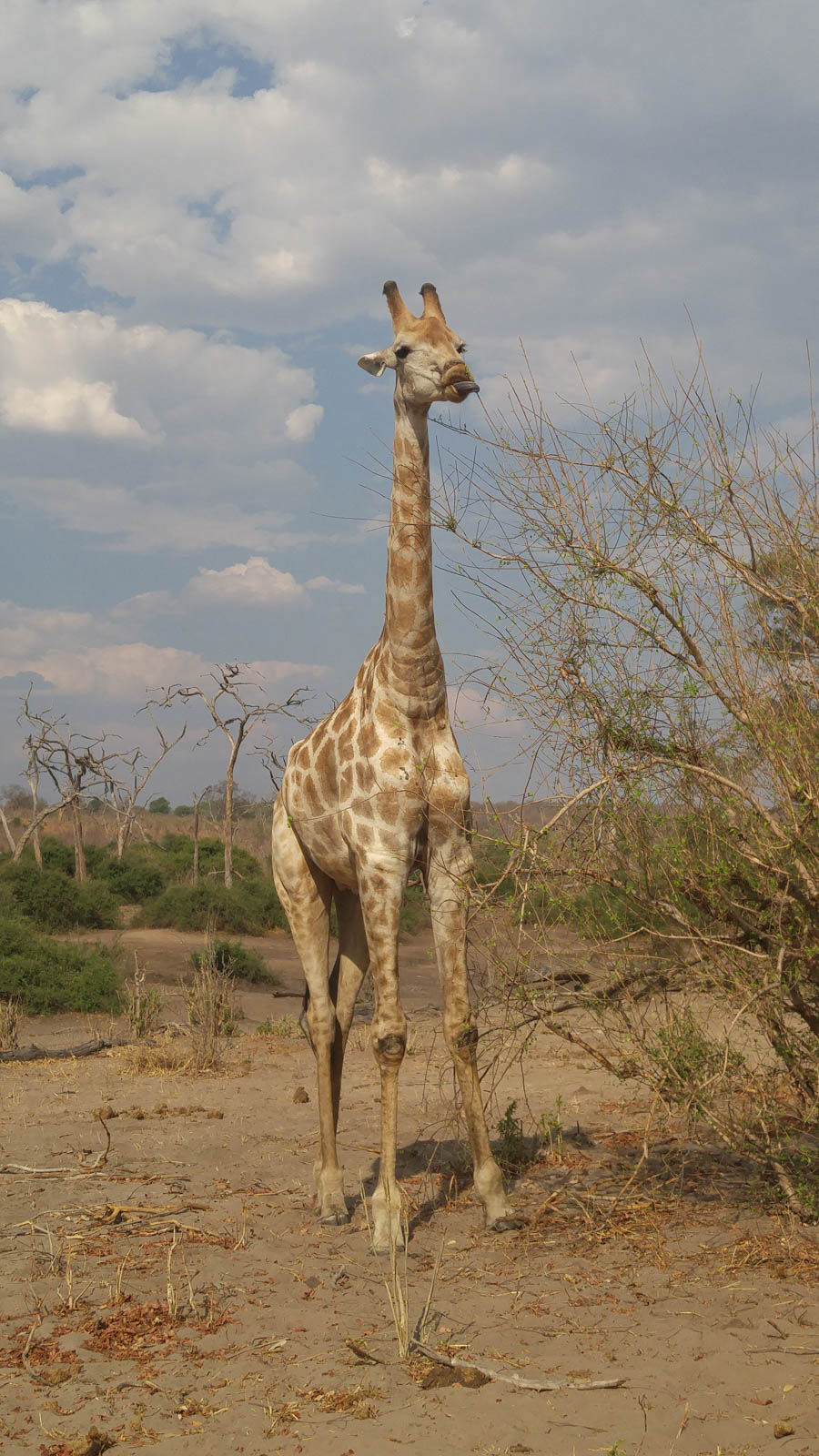
Quite an amazing engineering feat!
Did You Know? - Despite their characteristic long necks, giraffes actually have the same number of neck vertebrae as humans—just seven. Each individual vertebra is super-sized, measuring up to ten inches long.
Because of their unusual shape, giraffes have a highly-specialized cardiovascular system that starts with an enormous heart. It's two feet long and weighs up to 25 pounds.
Additionally, the jugular veins contain a series of one-way valves that prevent excess blood flow to the brain when the giraffe lowers its head to drink.
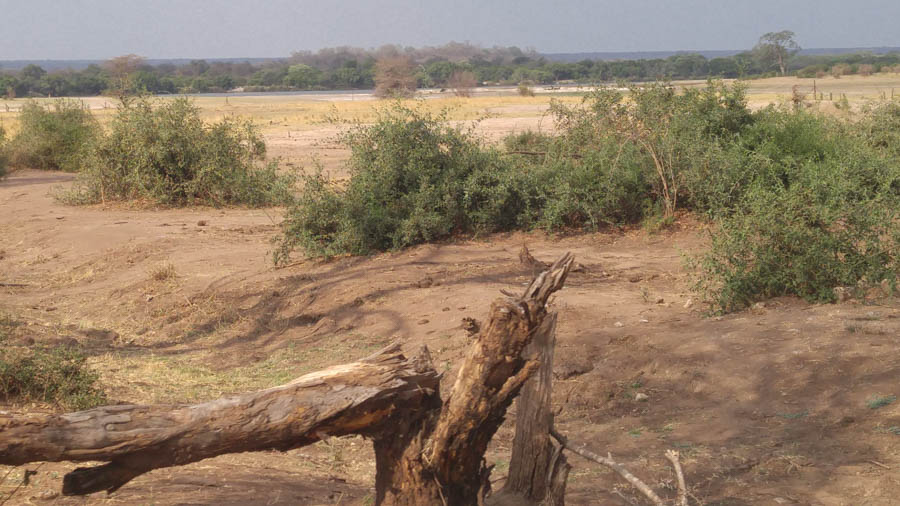
Time to head back to civilization and the REAL dangerous animals
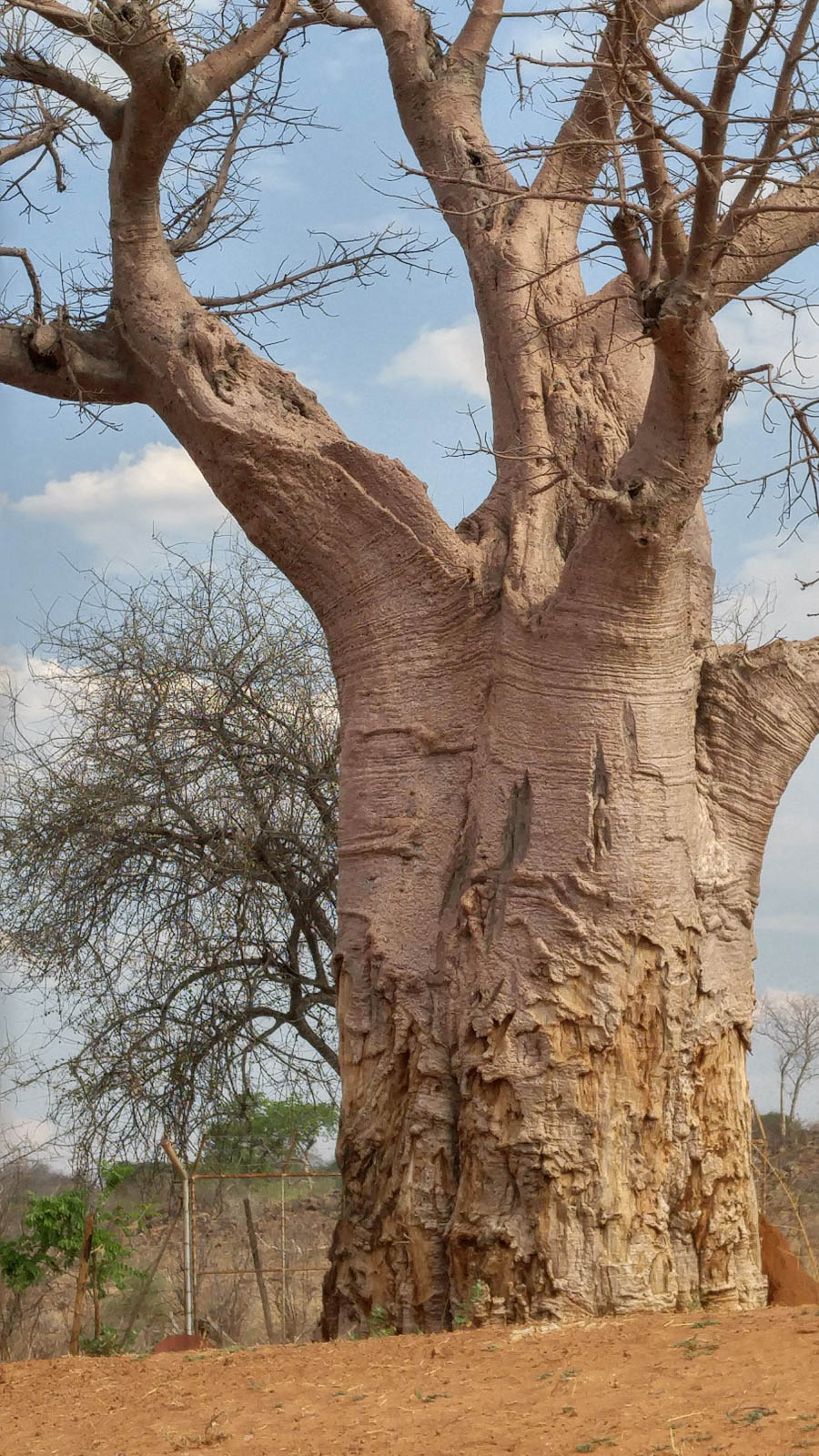
Someone has been busy eating the bark of this tree!
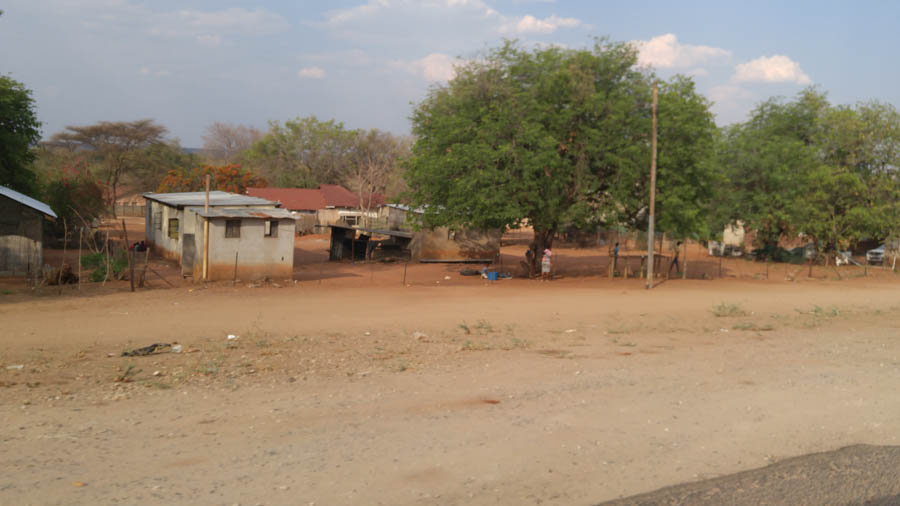
The locals are likely to own cattle
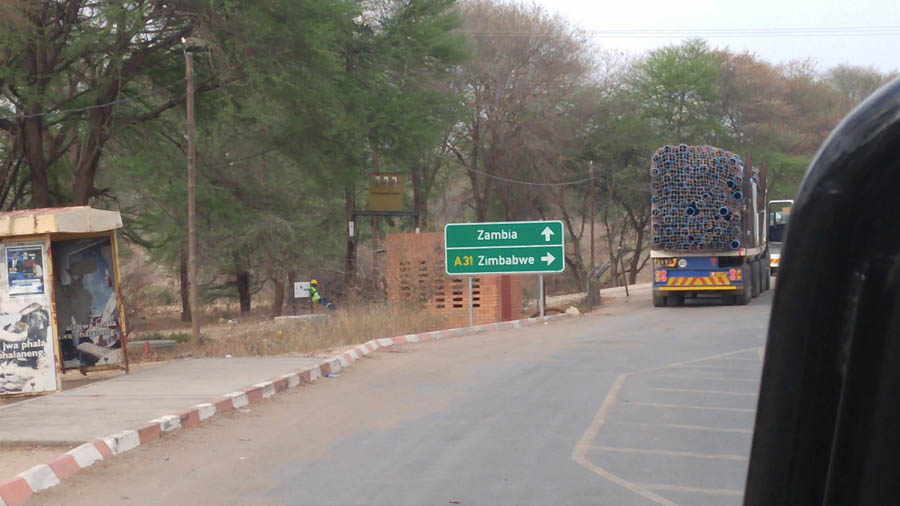
Decisions decisions - We are heading back to Zimbabwe
and one more night at Victoria Falls
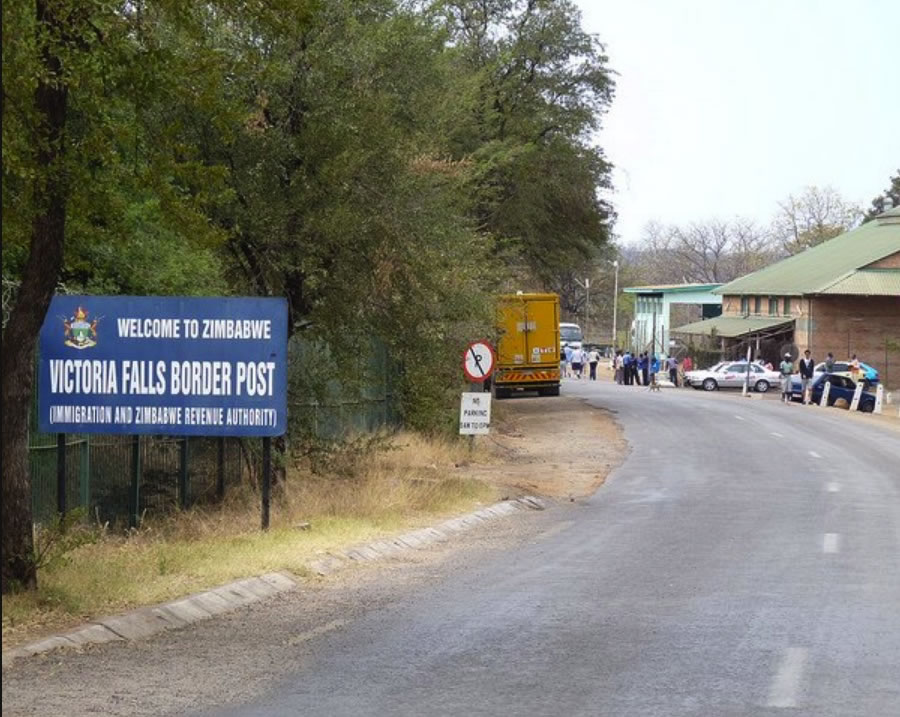
We returned safely to Zimbabwe... A few more miles to the lodge
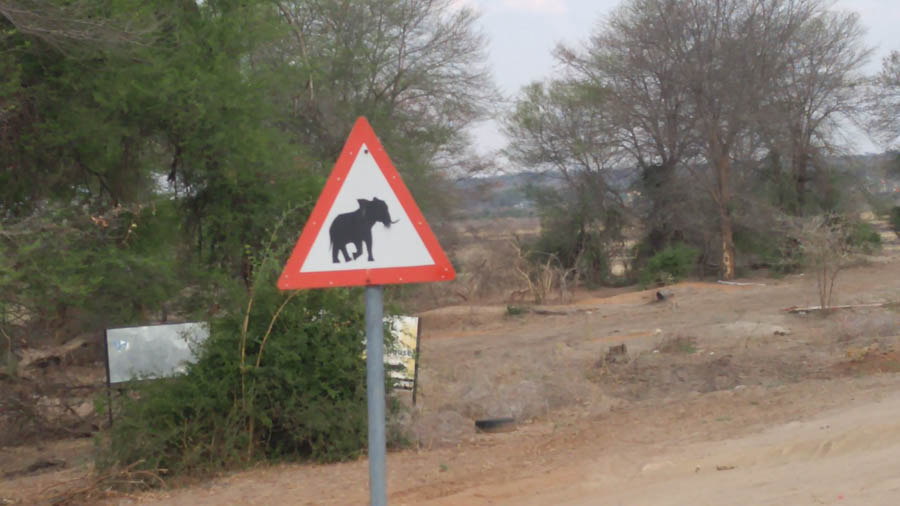
They are not kidding!
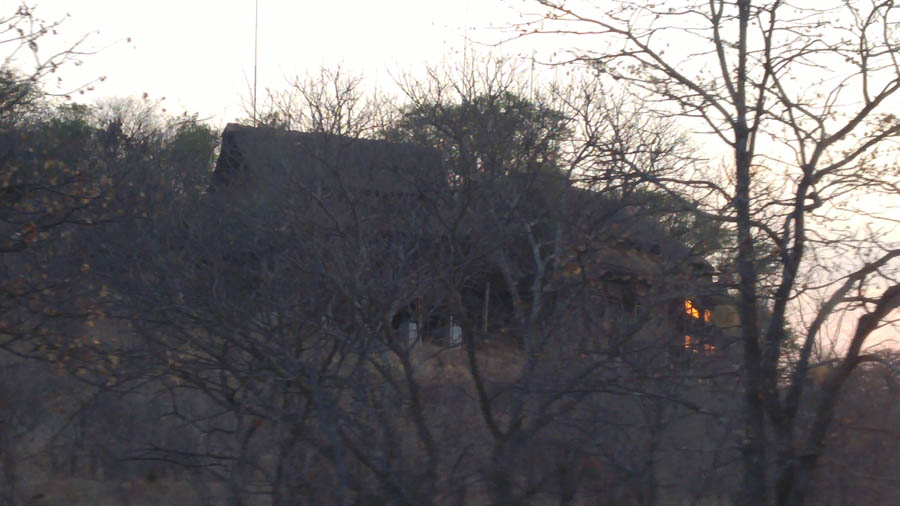
Our Safari Lodge as the sun sets
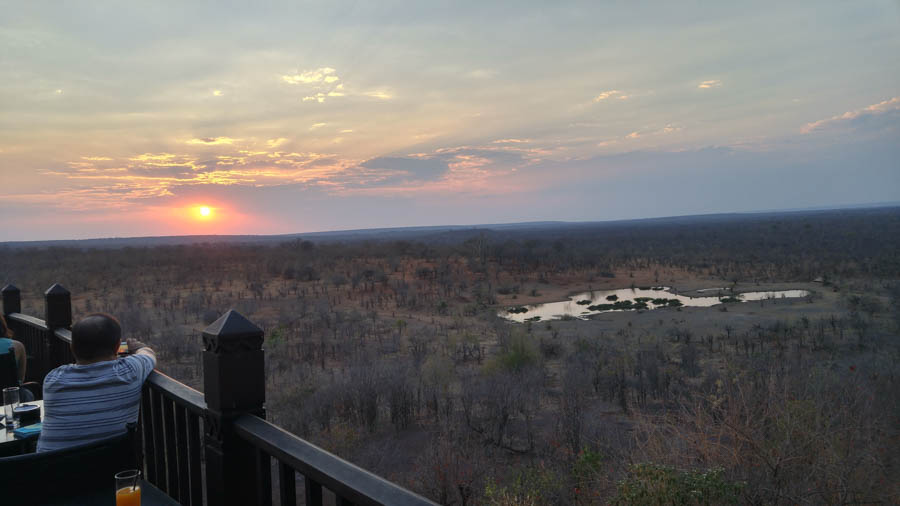
Tomorrow another adventure occurs

To Livingston for a Morning Visit & Afternon
Flight To Cape Town South Africa (Page Eight)